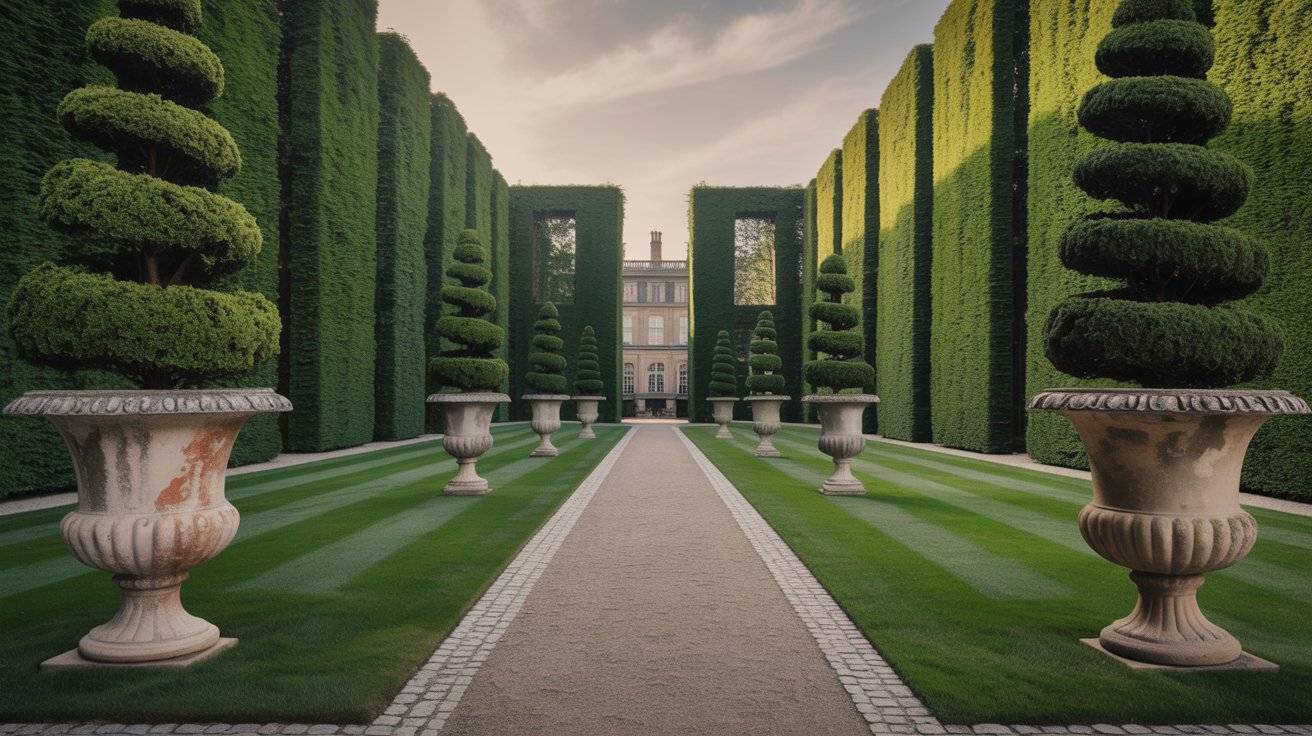Imagine entering at your garden where every walkway, planting configuration, and aesthetic element displays a thoughtful balance, and created to foster an atmosphere built around serenity and poise.
The aesthetic value of this European form garden, influenced by French, Italian, and English cultural heritages of landscapes, cultivates a feeling of balance within home garden environments.
Symmetrical gardens with geometric layouts and well-trimmed topiary turn ordinary material into works of art. With proper planning, even a small backyard can capture Versailles or convey the charming charm normally present in an English estate.
In this article have 24 reflective ideas based on age-old traditions. From humble boxwood hedges to peaceful reflection Garden Rooms, all of these ideas are presented with a focus on the values of structural integrity, balance, and long-lasting beauty outdoor compound.
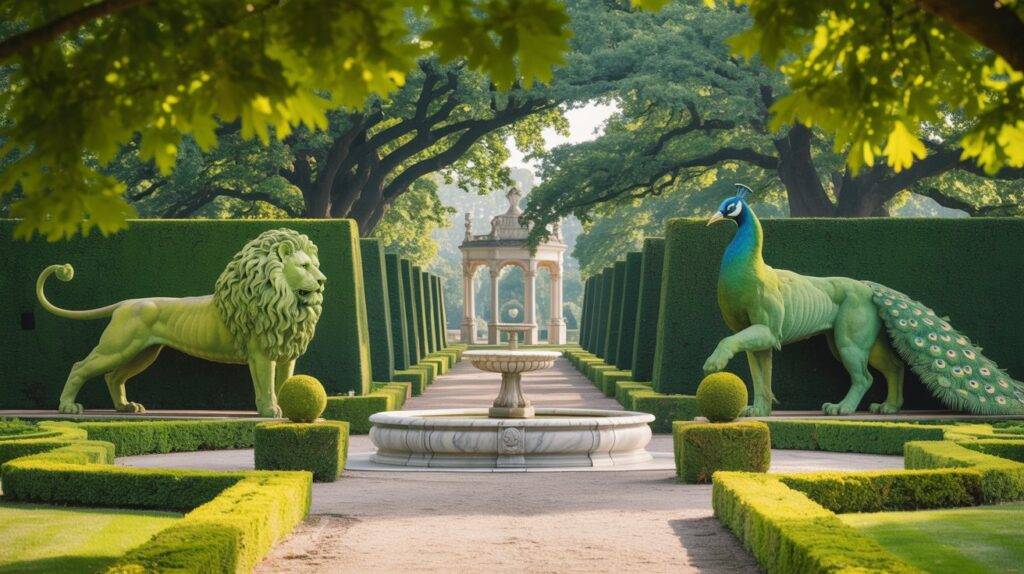
1. Geometric Lawn Patterns
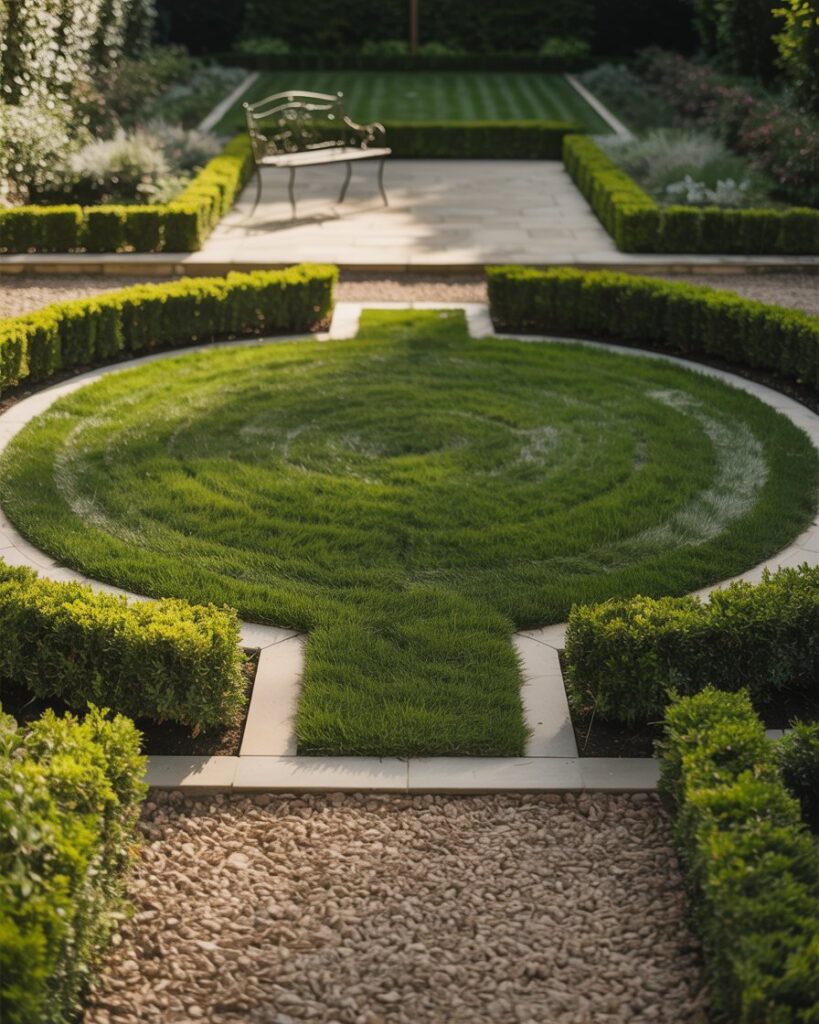
Geometric lawn patterns use crisp shapes like circles, squares, or diamonds to anchor your garden. This approach draws the eye and creates a sense of order. Start by defining spaces with low hedges (boxwood works well) or contrasting materials like gravel.
For example, a circular lawn surrounded by pathways instantly adds sophistication. Keep edges sharp with regular trimming, and mirror shapes on both sides of a central path for symmetry.
In smaller yards, try a single geometric bed near a patio. This idea requires minimal investment but delivers maximum impact, making your garden feel curated and cohesive.
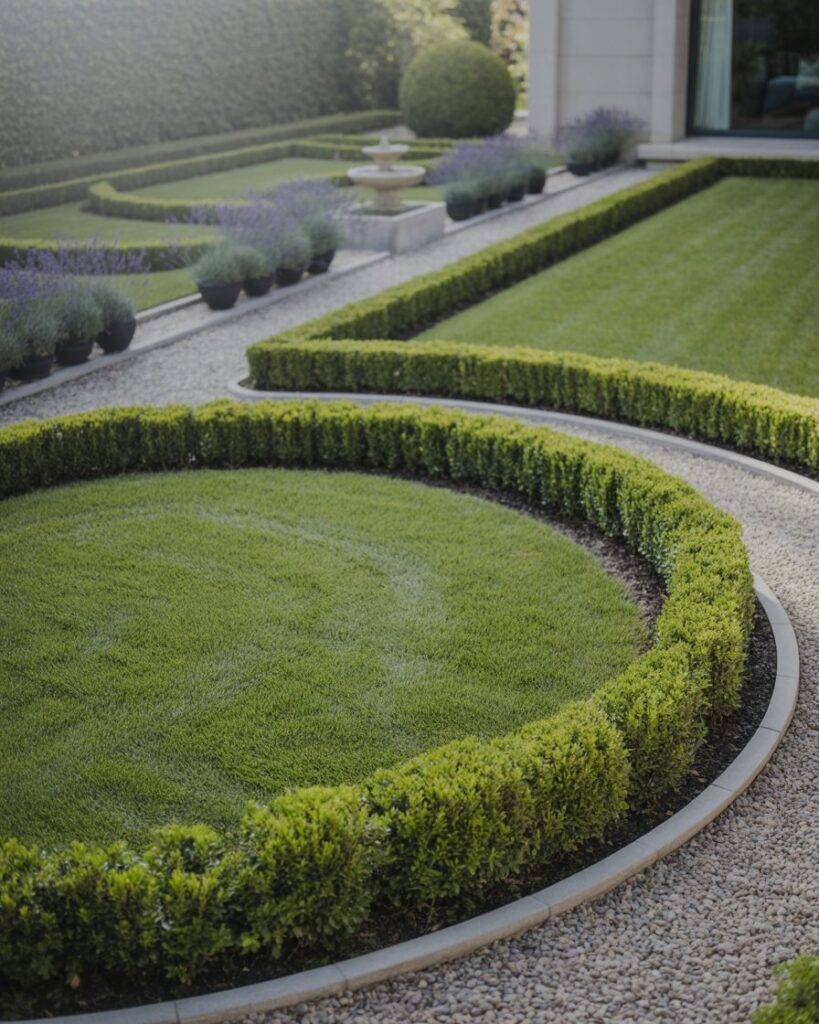
2. Parterre Gardens
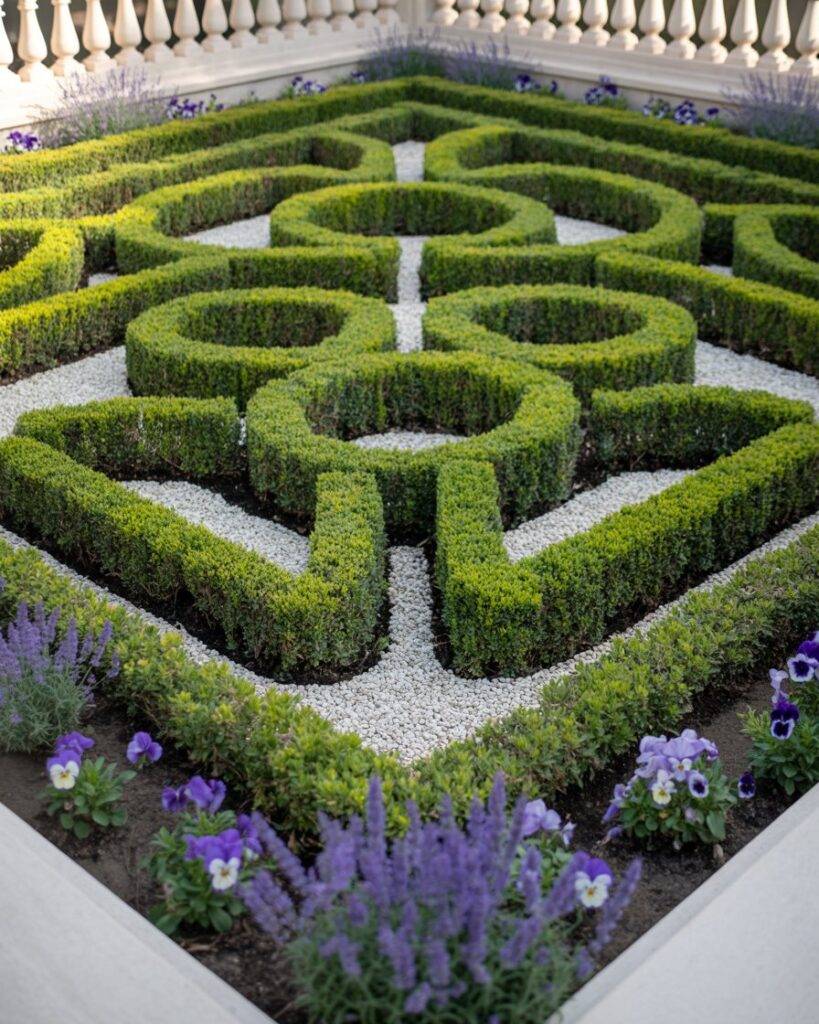
Parterre gardens feature intricate, low-hedge designs resembling lace or embroidery. Traditionally filled with gravel, flowers, or herbs, they’re viewed from above perfect for terraces or balconies. Start small: outline a simple knot or scroll pattern using dwarf boxwood, then fill the spaces with white gravel for contrast.
For color, add seasonal blooms like pansies or lavender. Maintenance involves light pruning every 4–6 weeks. Parterres fit neatly in raised beds or near entryways, adding historical charm without needing vast space.
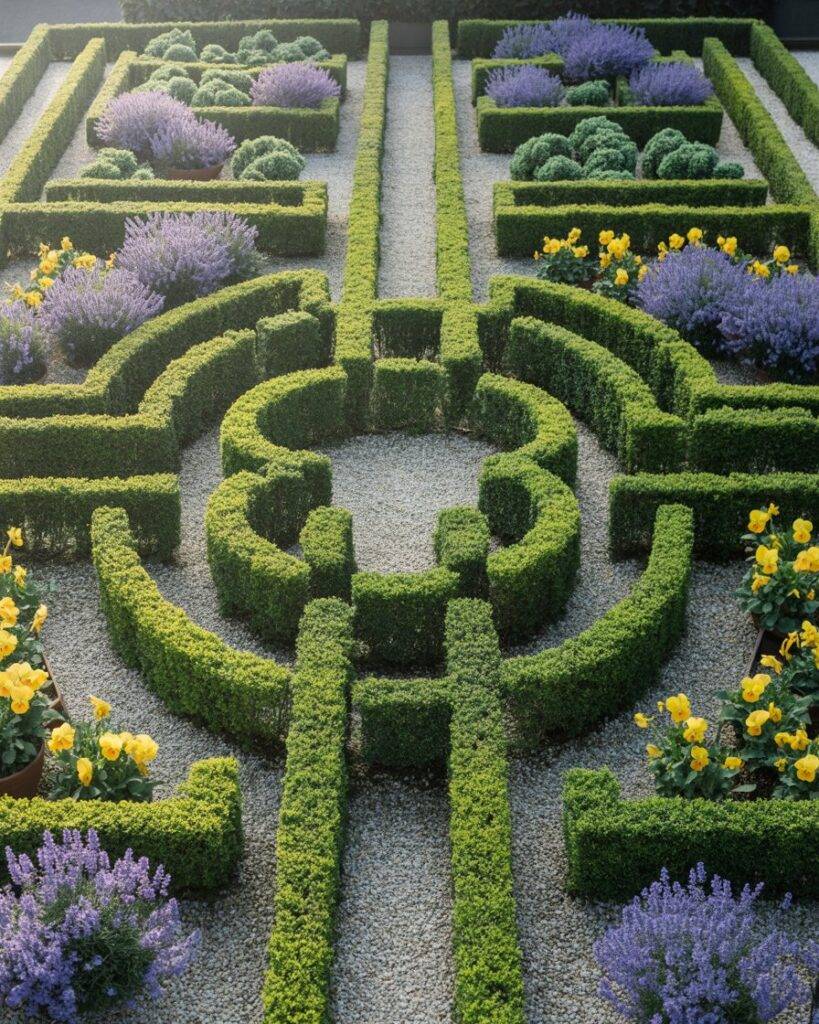
3. Boxwood Hedges
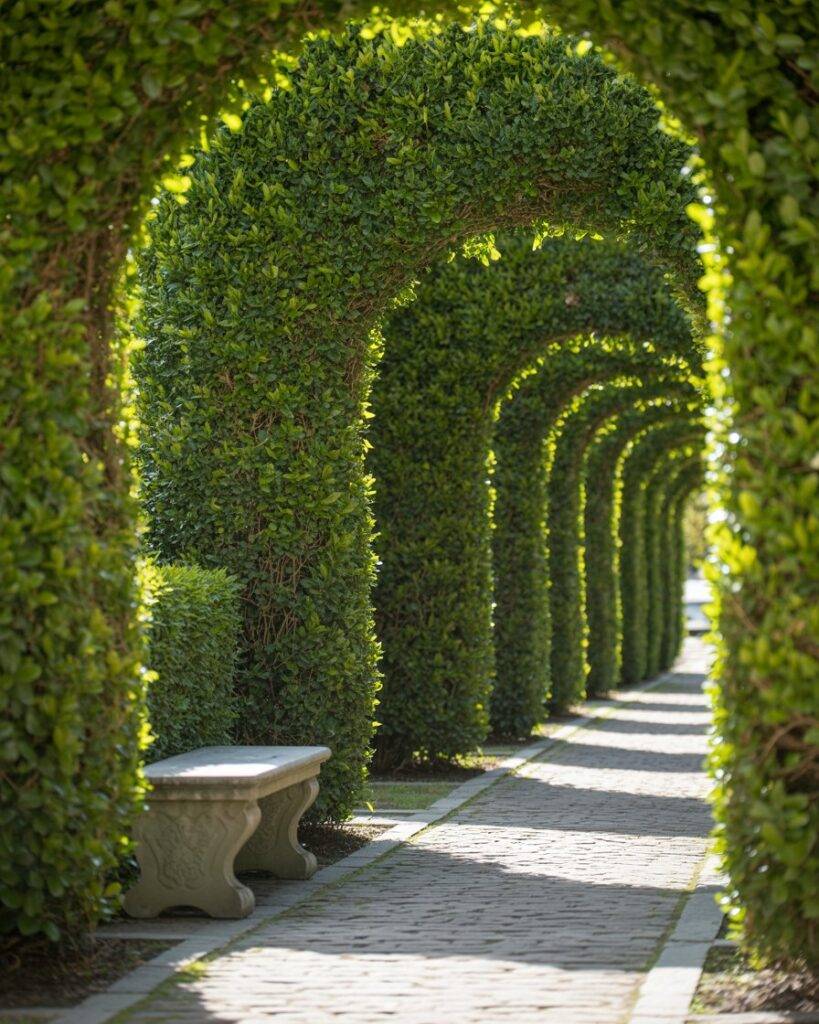
Boxwood hedges define formal gardens with clean lines and structure. Use them to edge pathways, frame flower beds, or create “garden rooms.” Plant dwarf varieties (e.g., ‘Suffruticosa’) 12–18 inches apart for dense borders. Trim twice yearly (spring and late summer) to maintain sharp edges.
For visual depth, pair taller hedges with lower ones. Boxwood thrives in sun or partial shade with well-drained soil. If pests like boxwood blight are a concern, substitute with holly or yew. This classic element brings year-round greenery and order.

4. Topiary Animals
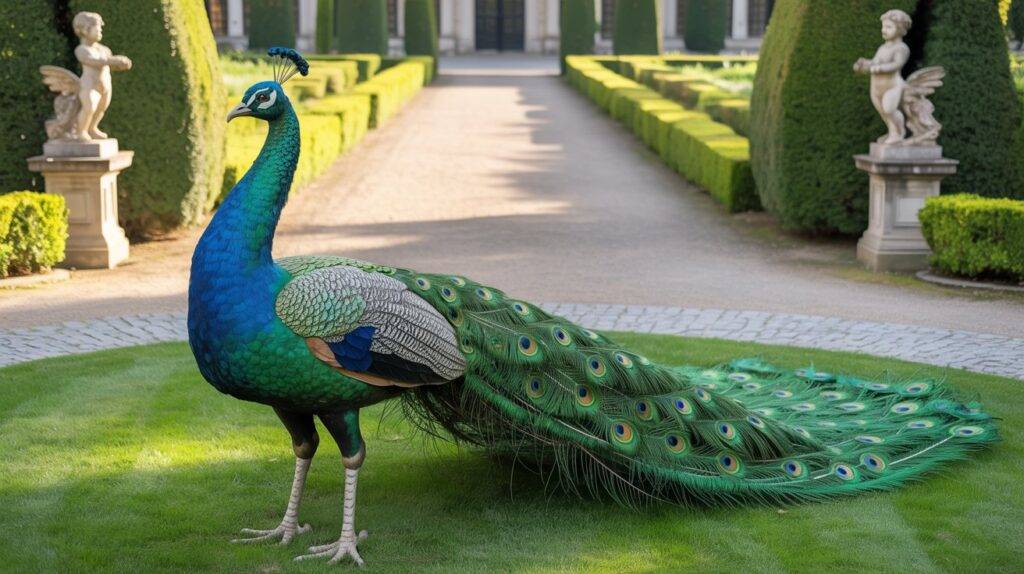
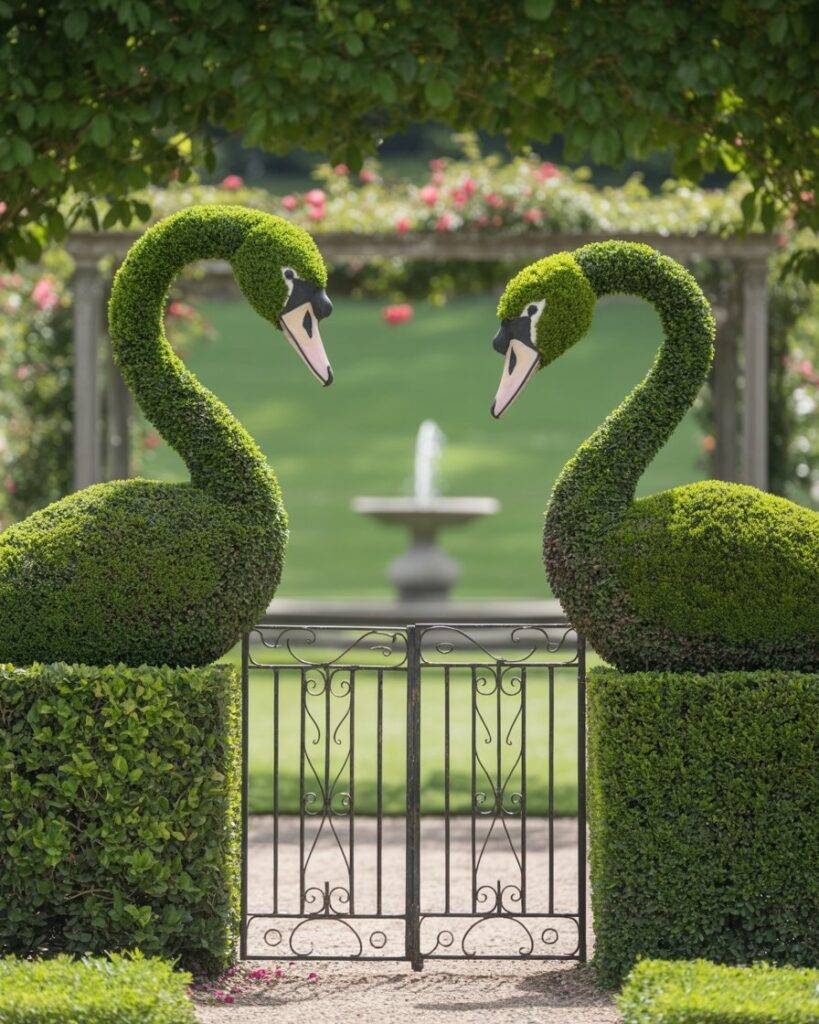
Topiary animals add whimsy while honoring formal symmetry. Start with easy shapes like spheres or cones (use yew or privet), then advance to birds or rabbits. Place pairs flanking a gate or bench to maintain balance.
For beginners, buy pre-shaped plants from nurseries. Prune monthly during growing season to preserve form. In colder climates, choose hardy plants like holly. These living sculptures become focal points, blending artistry with garden structure.
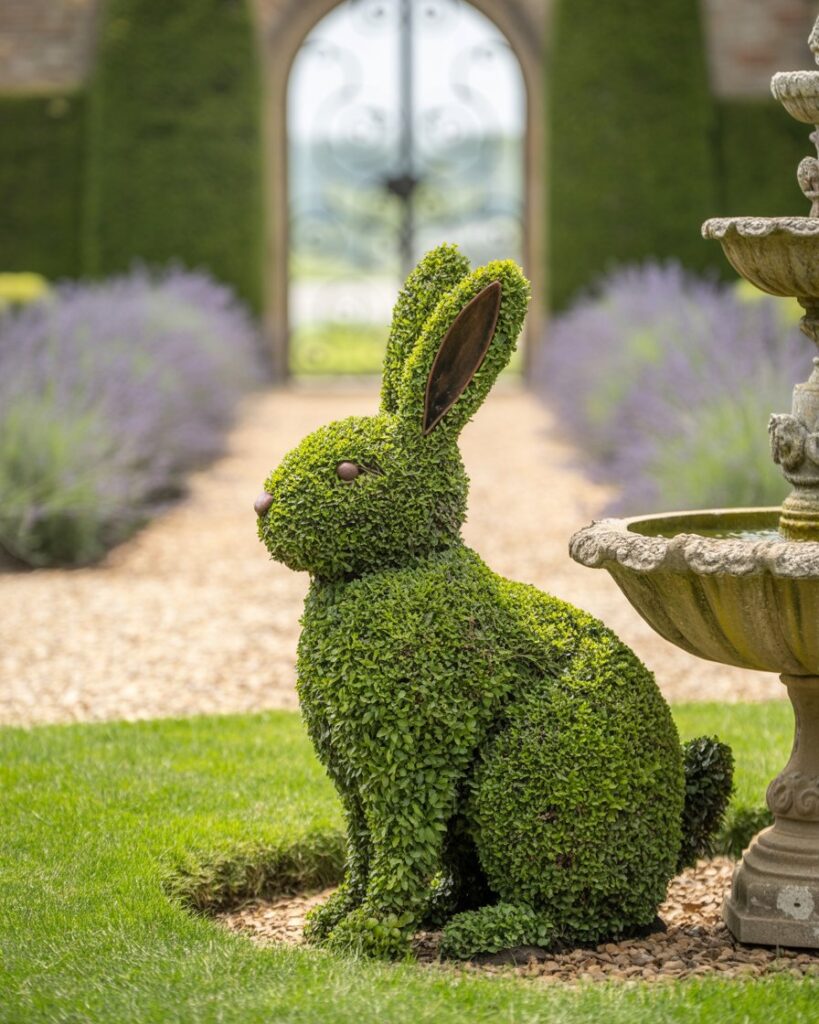
5. Symmetrical Pathways
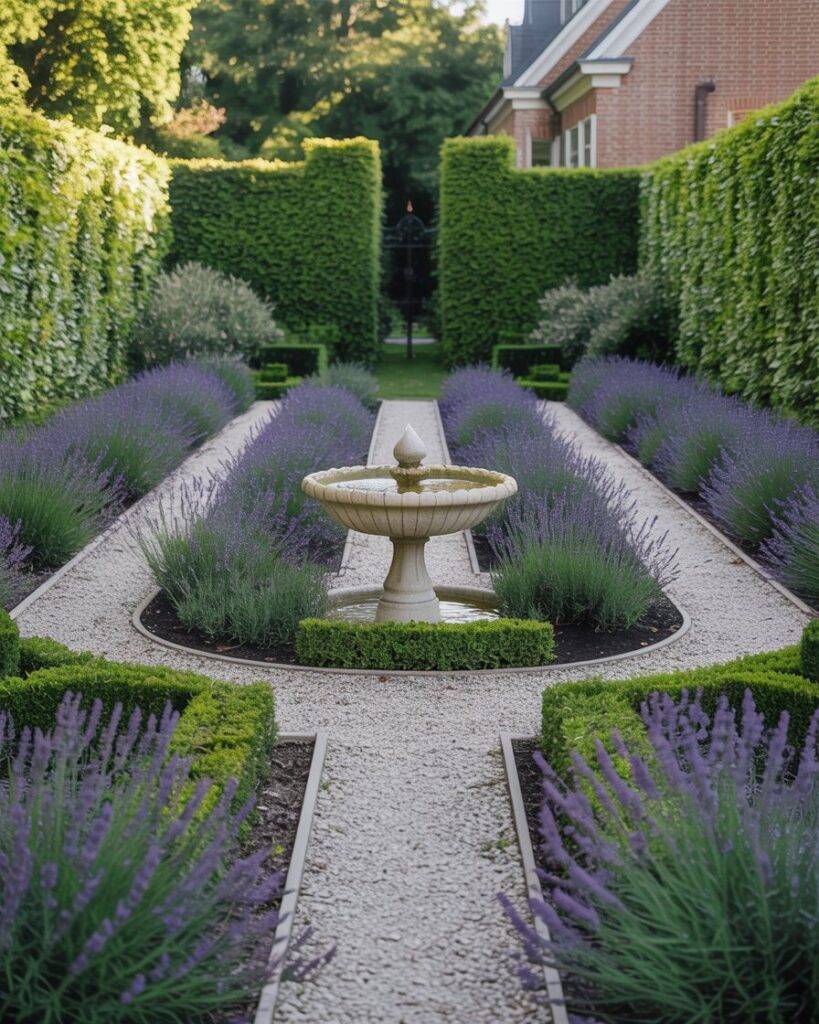
Symmetrical pathways guide movement and reinforce balance. Opt for straight lines gravel, brick, or stone radiating from a central point (like a fountain).
Ensure widths match (aim for 3–4 feet) and edge with uniform plants (e.g., lavender or low boxwood). For cohesion, align paths with your home’s architecture. In sloped yards, add shallow steps. This idea organizes space efficiently and makes gardens feel larger.
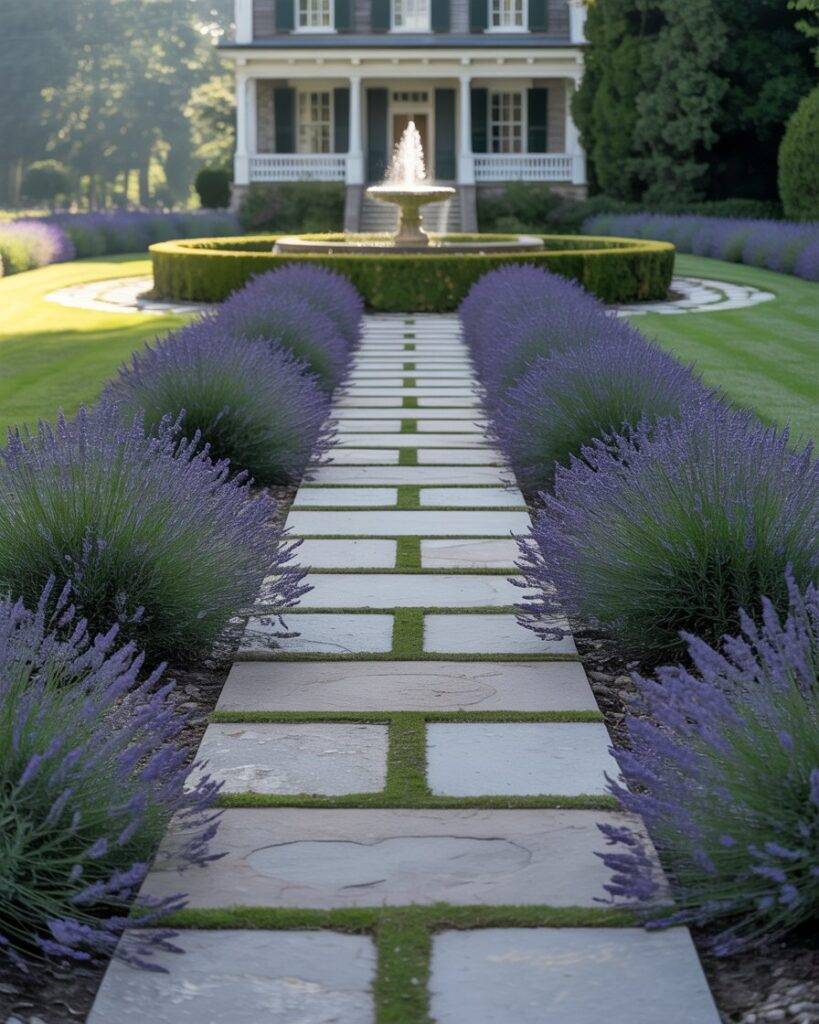
6. Classic Fountains
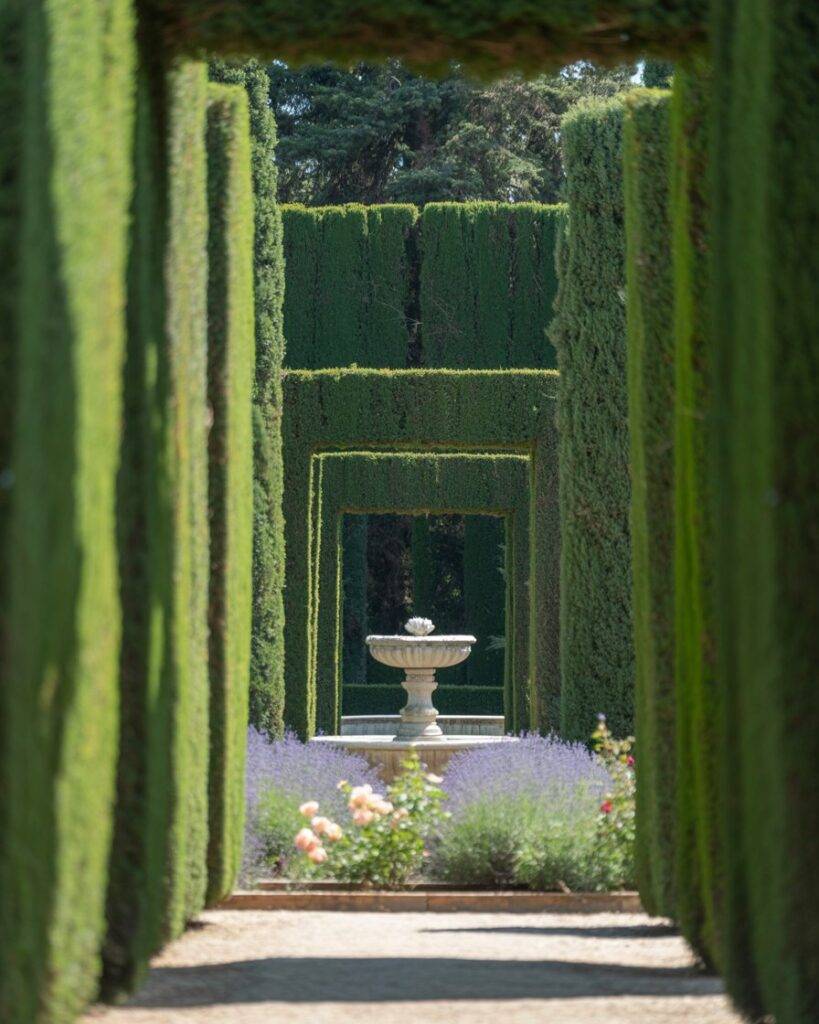
A classic fountain anchors the garden with sound and motion. Choose tiered stone or sleek metal designs scaled to your space. Install centrally, where paths converge, or at the end of an axis.
Surround it with symmetry: matching potted plants or clipped hedges. For low-maintenance options, solar powered fountains avoid wiring. This feature creates tranquility while emphasizing formal geometry.
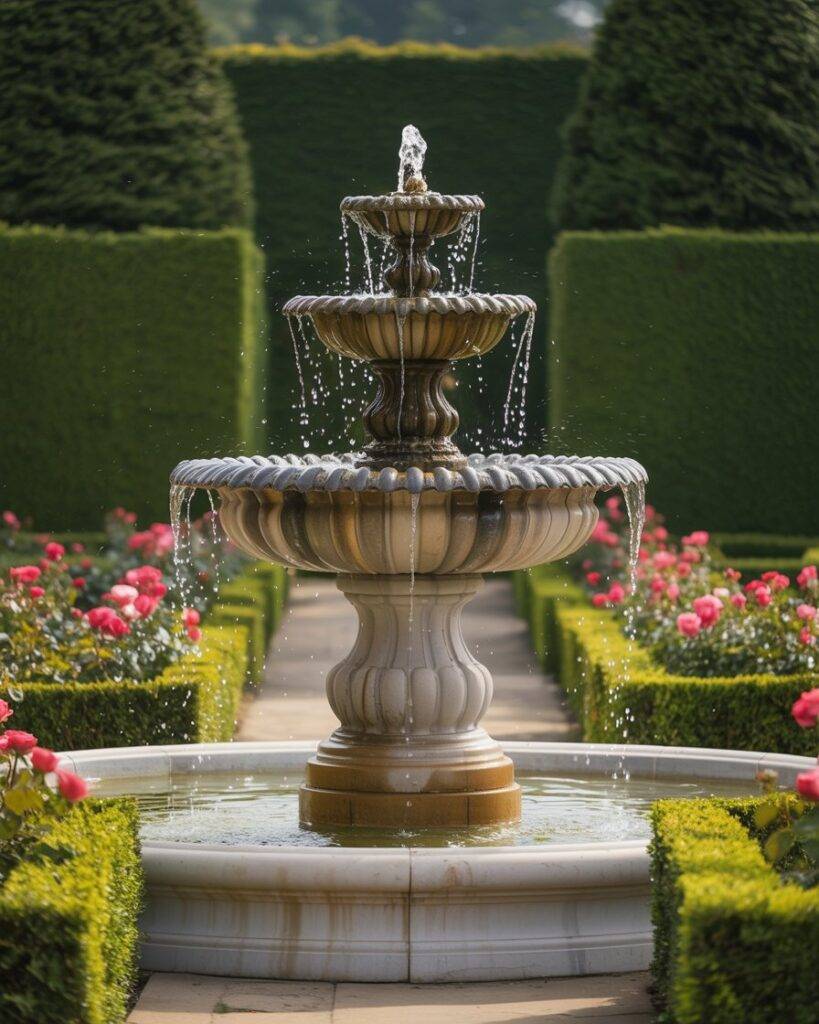
7. Formal Rose Gardens
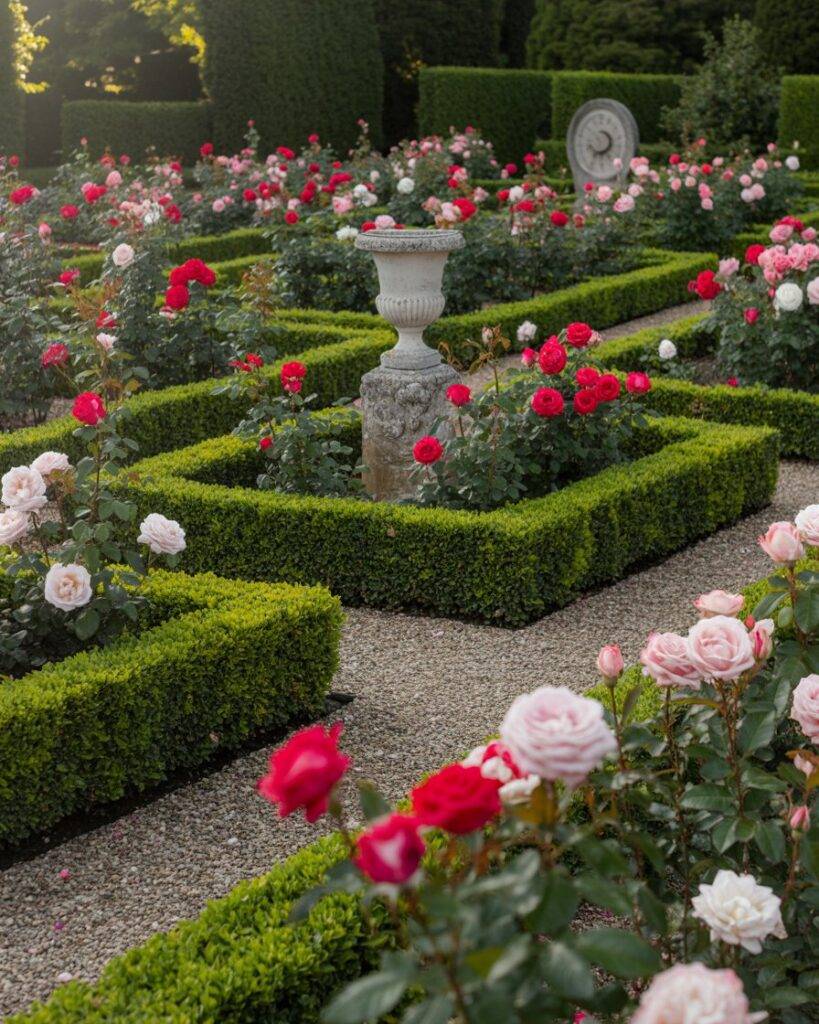
Formal rose gardens arrange blooms in geometric beds divided by gravel paths. Plant uniform varieties (e.g., hybrid teas) in blocks of color for impact.
Enclose beds with low hedges, and add a central urn or sundial. Prune roses early spring and deadhead weekly. For smaller areas, try a single circular bed with climbing roses on a trellis. This blends fragrance with structure.
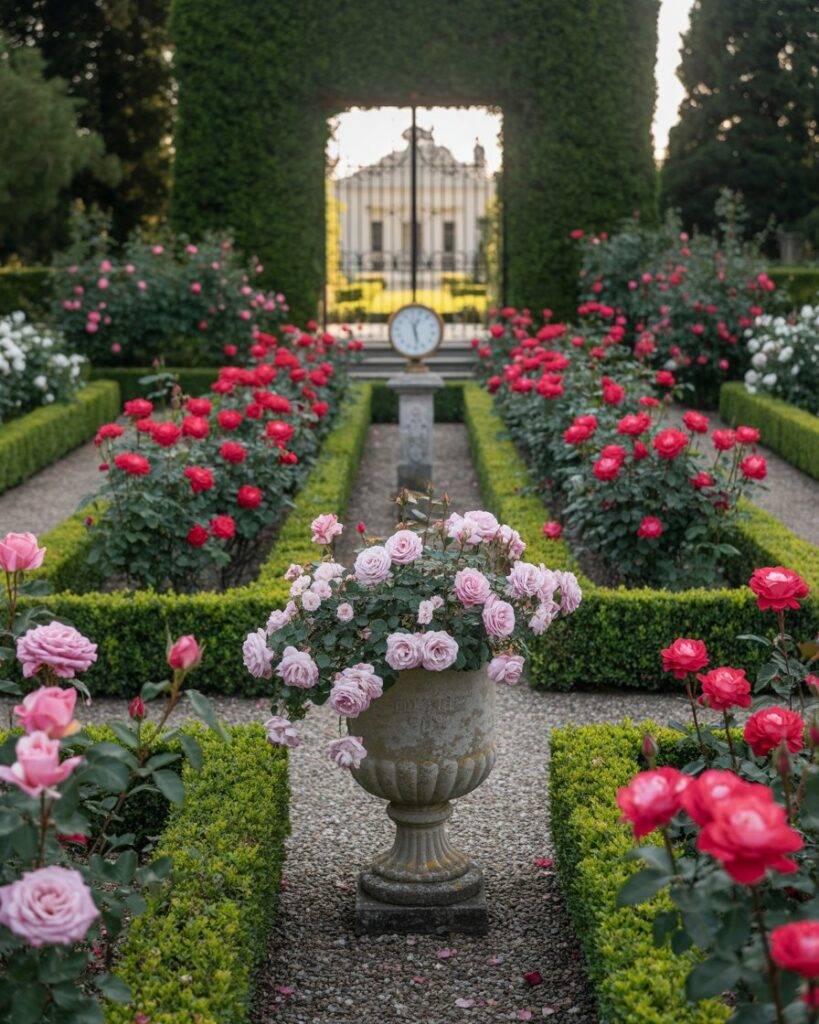
8. Statues and Sculptures
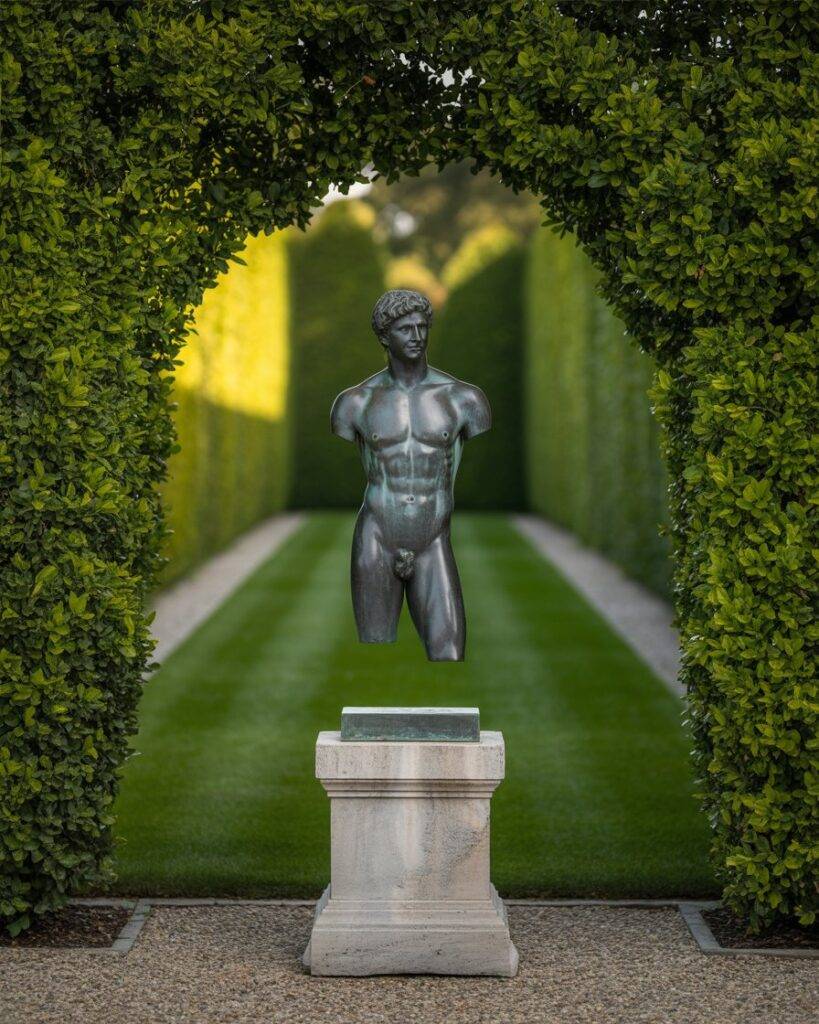
Statues add focal points without clutter. Place classical figures (e.g., Greek torsos or stone urns) at pathway ends or in niches. Use pairs for symmetry flanking stairs or gates. Choose weather-resistant materials like concrete or bronze. Keep surroundings simple: a backdrop of hedges or open lawn lets the art shine.

9. Knot Gardens
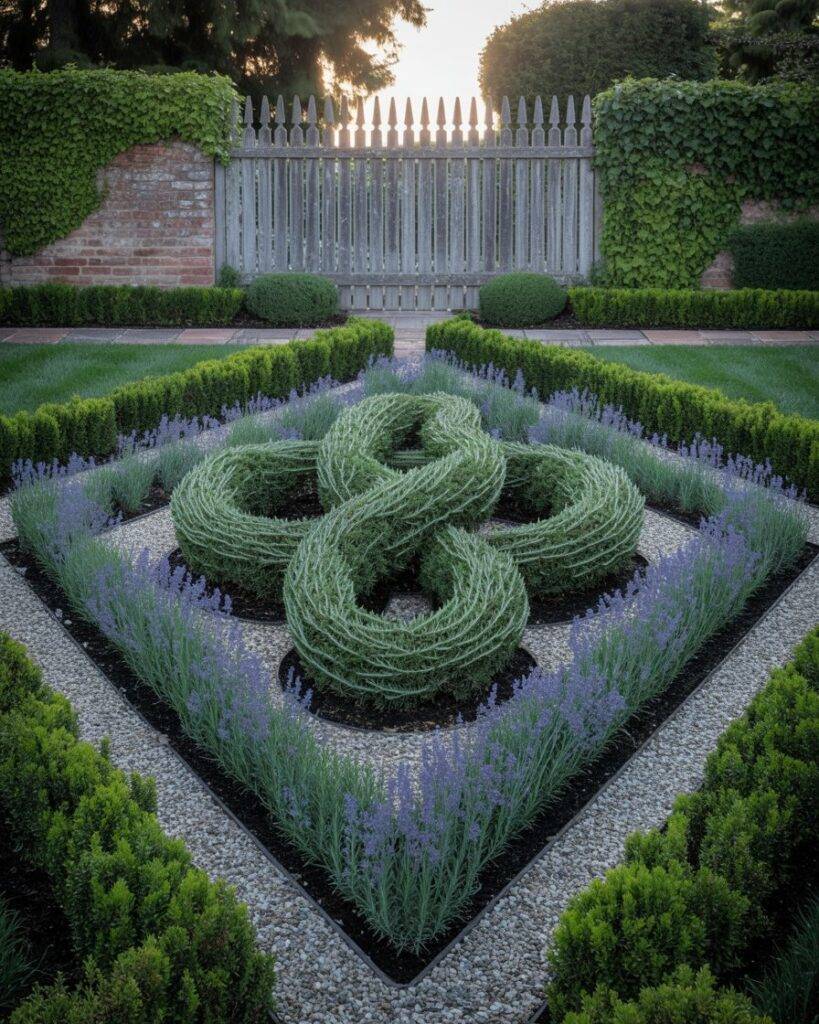
Knot gardens weave herbs or shrubs into interlaced patterns. Start with a small square: plant rosemary or lavender in ribbon-like designs, filling gaps with colored sand or gravel.
Trim monthly to maintain clarity. This works well in sunny, flat areas and offers sensory appeal through scent and texture.
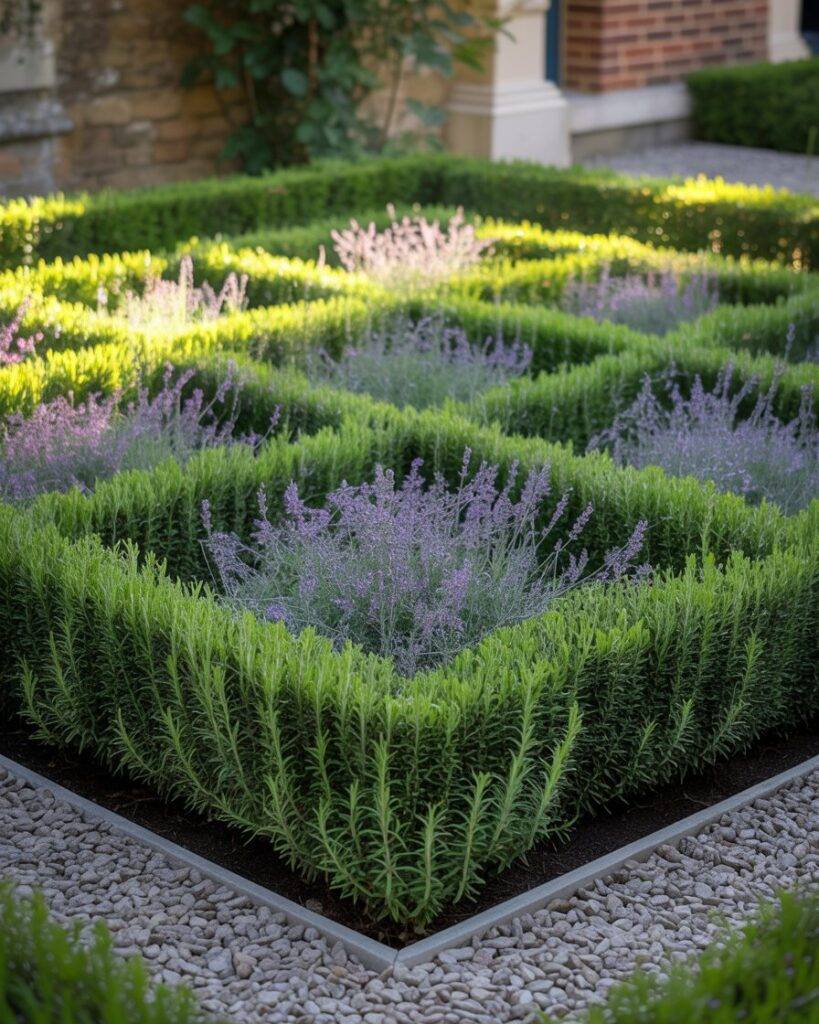
10. Reflecting Pools
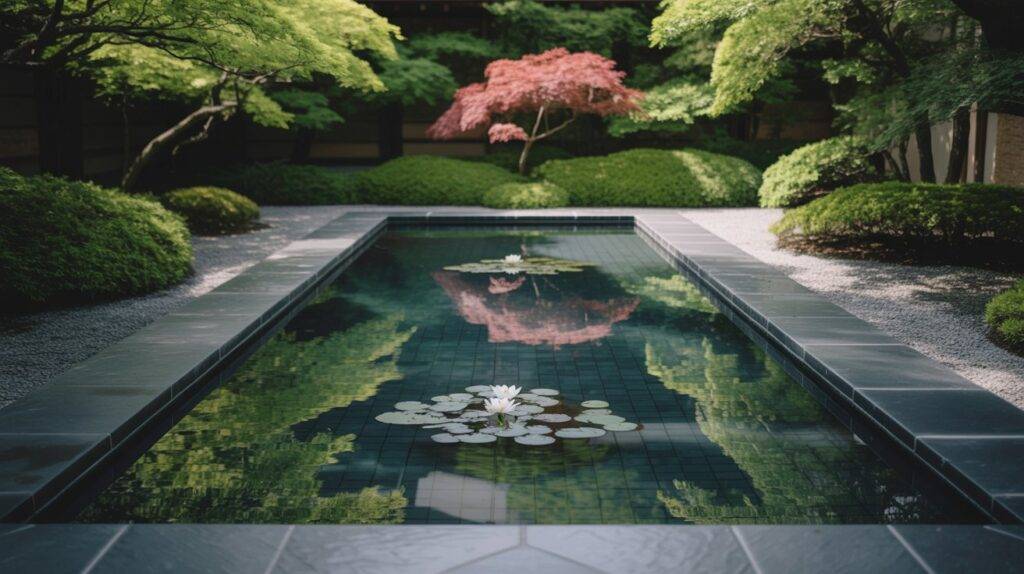
Reflecting pools double views for added depth. Install a shallow, dark-lined pool (rectangular or circular) along a central axis. Shield from wind with low walls or hedges to keep water still. Add water lilies sparingly. This minimalist feature amplifies light and symmetry.
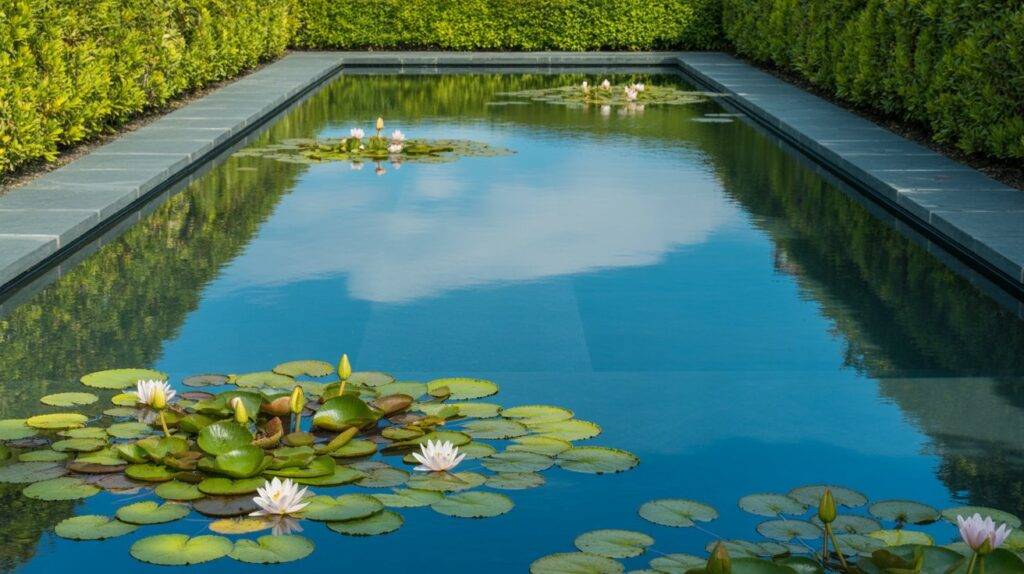
11. Terraced Gardens
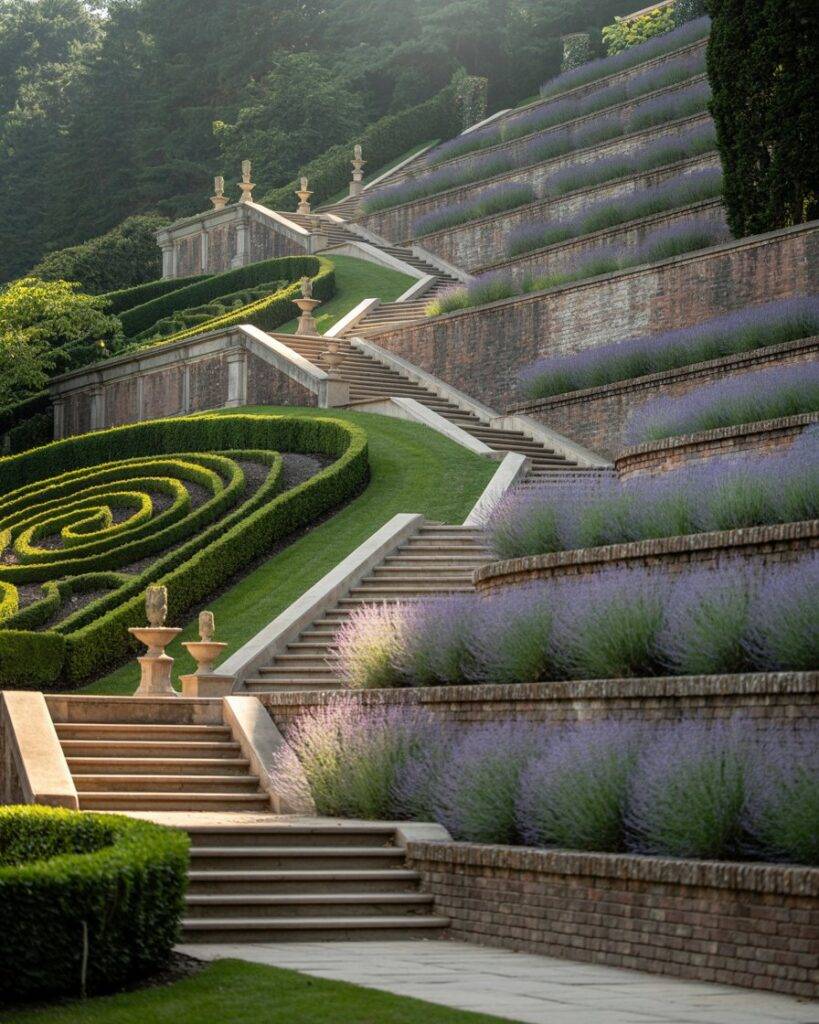
Terraces turn slopes into leveled “rooms.” Retain walls with stone or brick, then design each tier symmetrically e.g., a parterre on one, a fountain on another. Connect with wide, matching staircases. Ideal for uneven yards, terraces maximize space while controlling erosion.
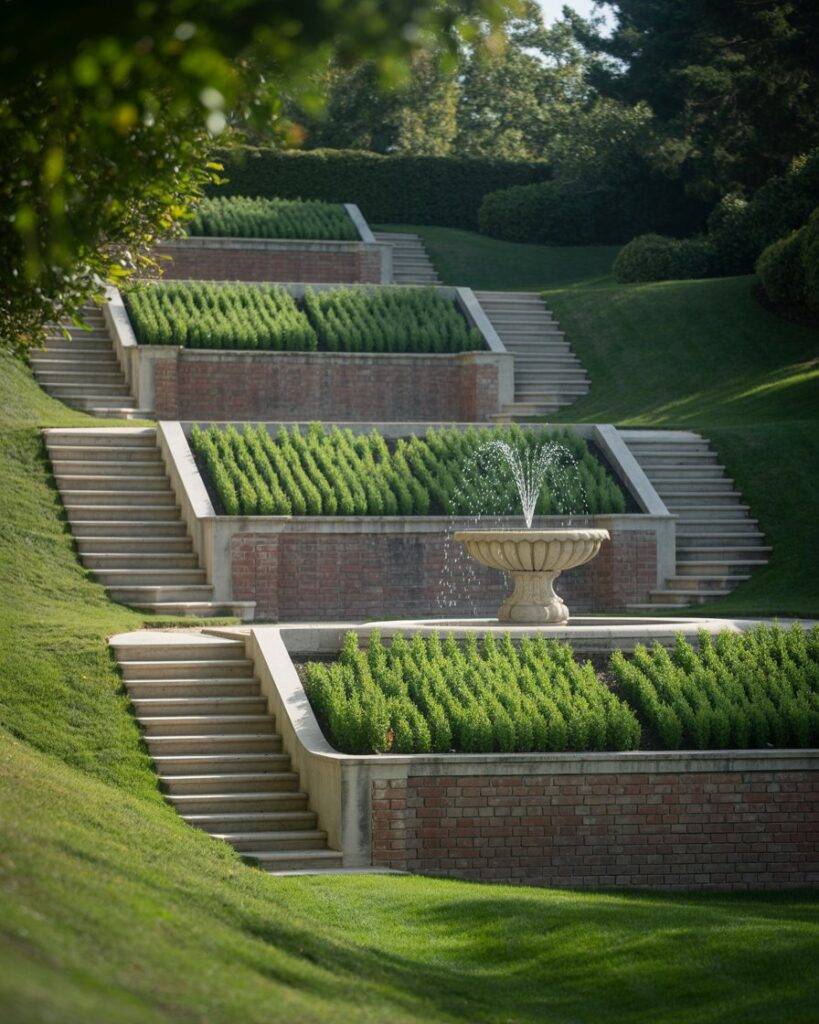
12. Arbors and Pergolas
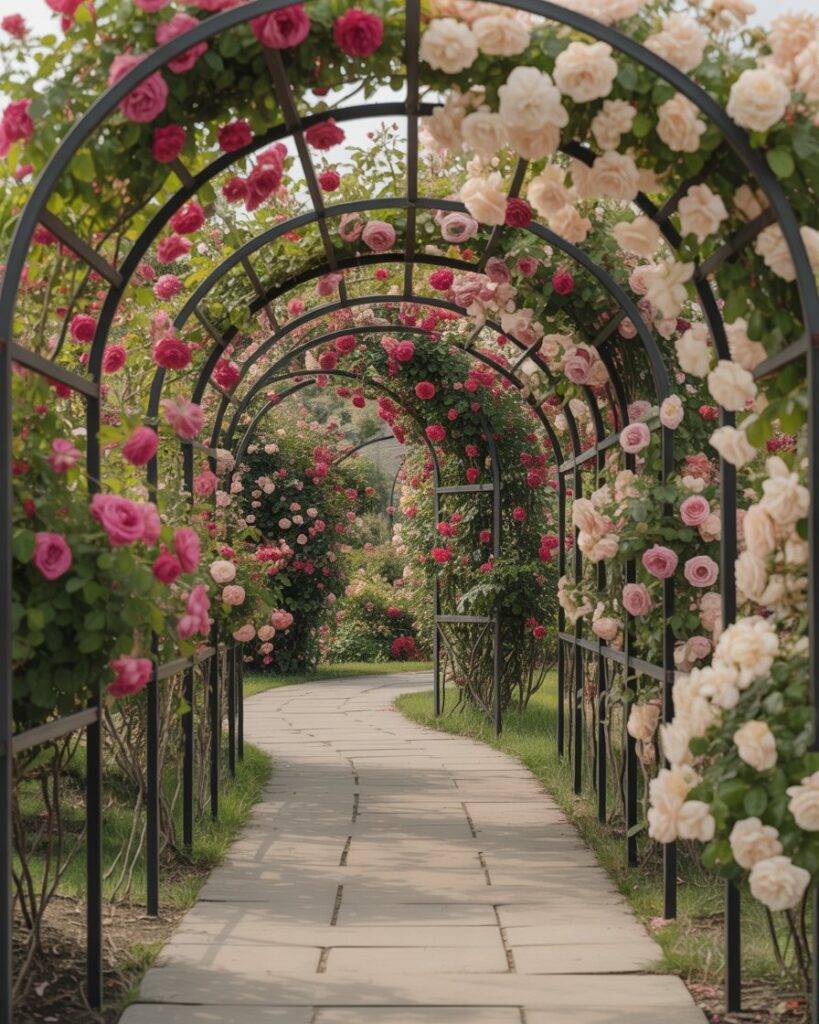
Arbors frame entrances or pathways with vertical structure. Choose simple, geometric designs (wood or iron) and train climbing roses or ivy evenly over them. Align multiple arbors along a path for rhythm. This adds height and invites exploration.
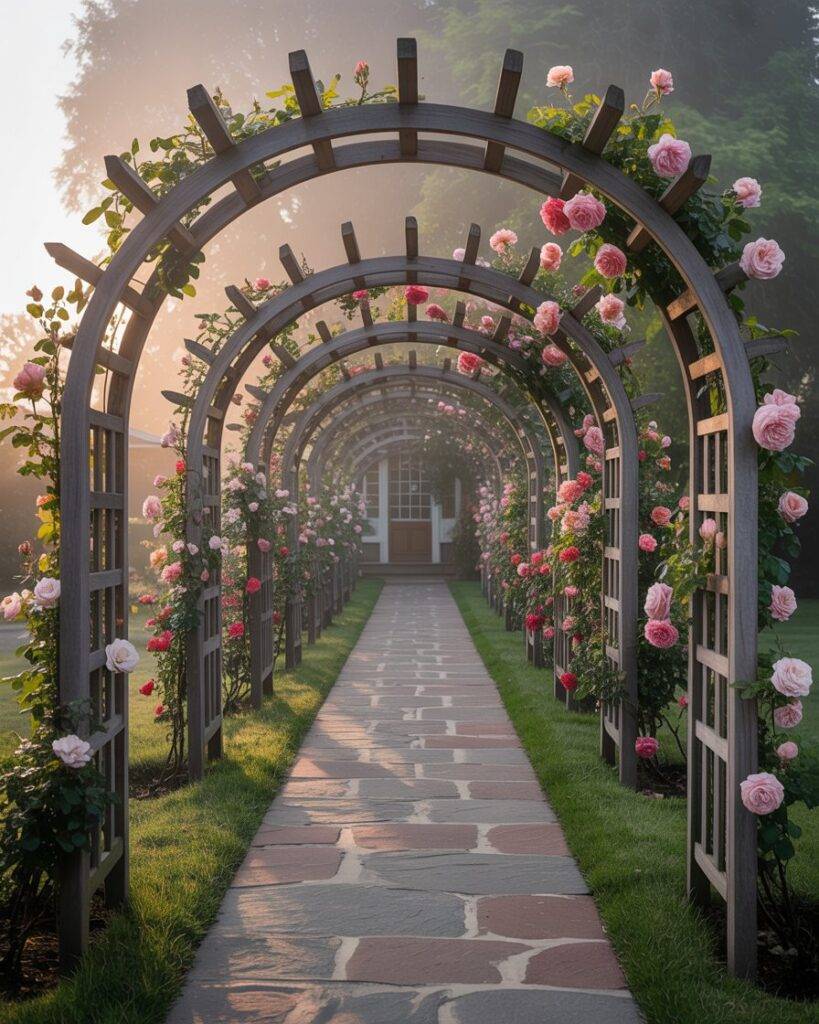
13. Herb Gardens in Geometric Beds
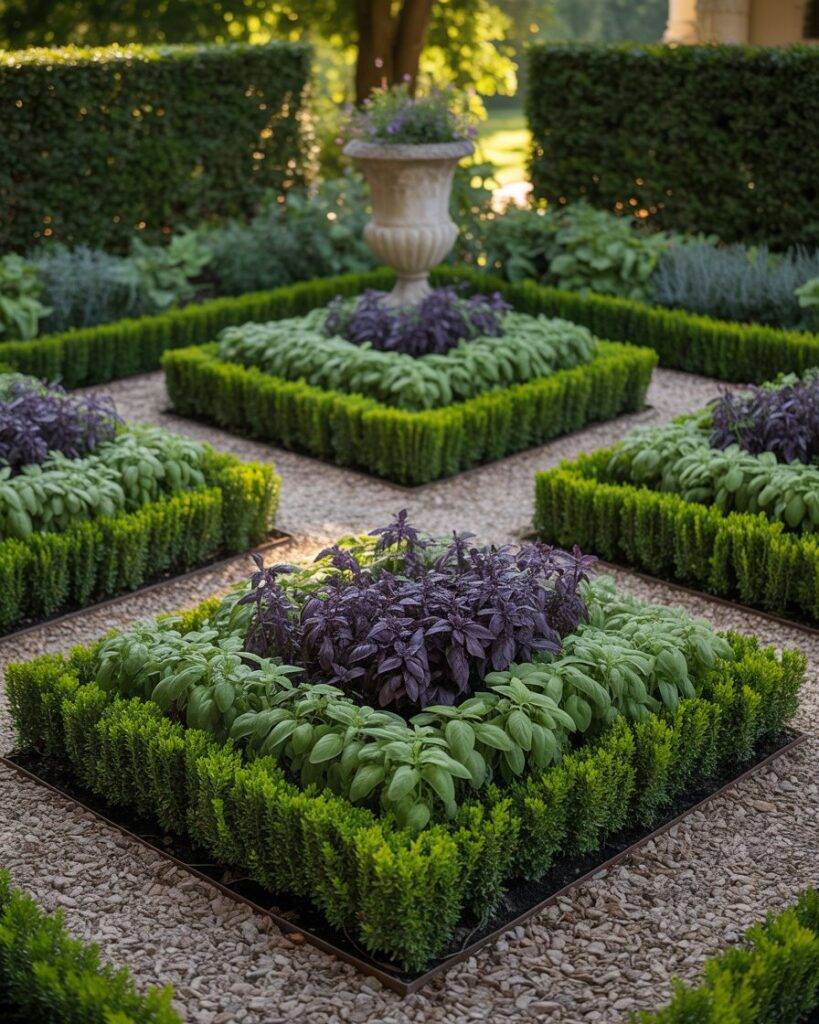
Formal herb gardens combine function and beauty. Divide space into symmetrical beds (e.g., four squares with a central urn).
Edge with thyme or boxwood, and plant herbs like sage or basil in repeating patterns. Gravel paths simplify access. This keeps kitchen essentials tidy and attractive.
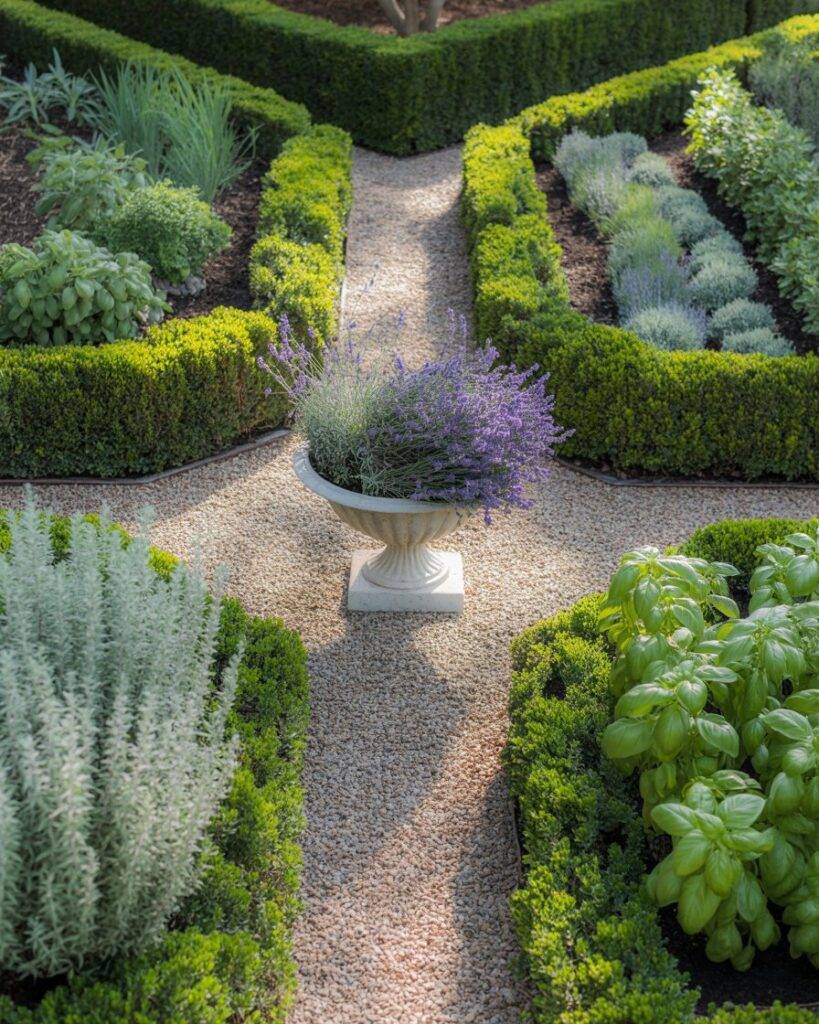
14. Allées (Tree-Lined Walkways)
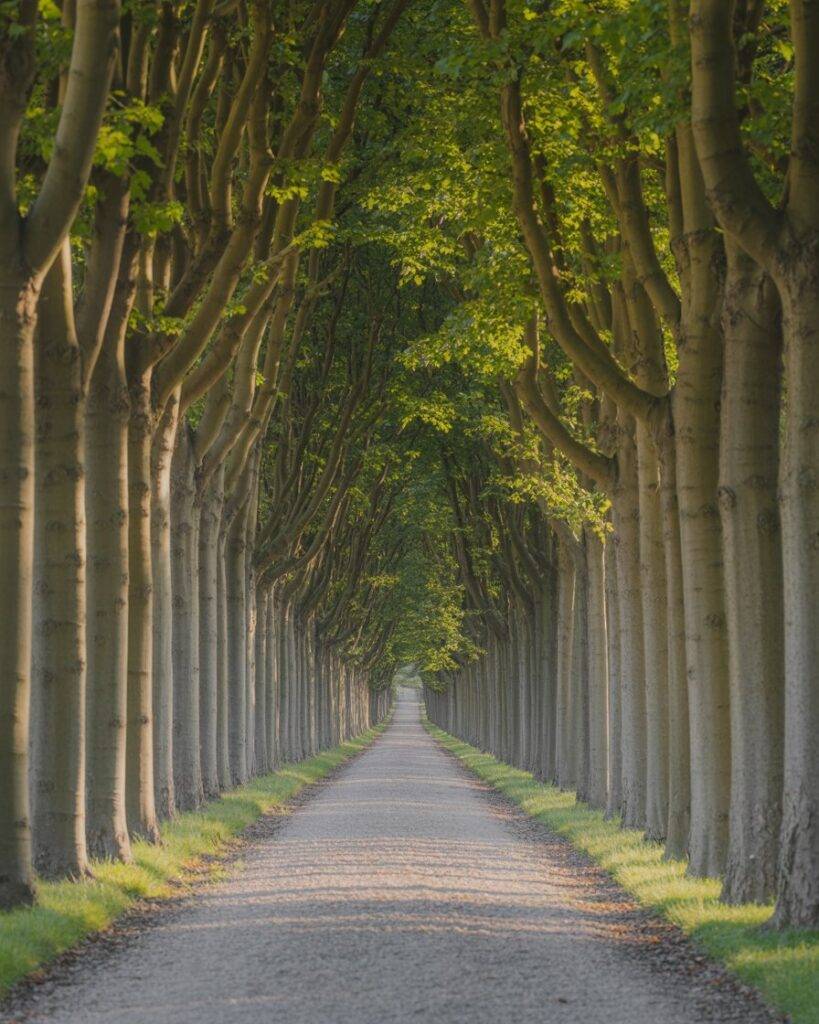
Allées create majestic corridors with identical trees (e.g., lindens or hornbeams). Plant in straight, parallel rows along a path. Prune for uniform canopies. Underplant with grass or moss for clean lines. This works in long, narrow spaces, adding perspective.
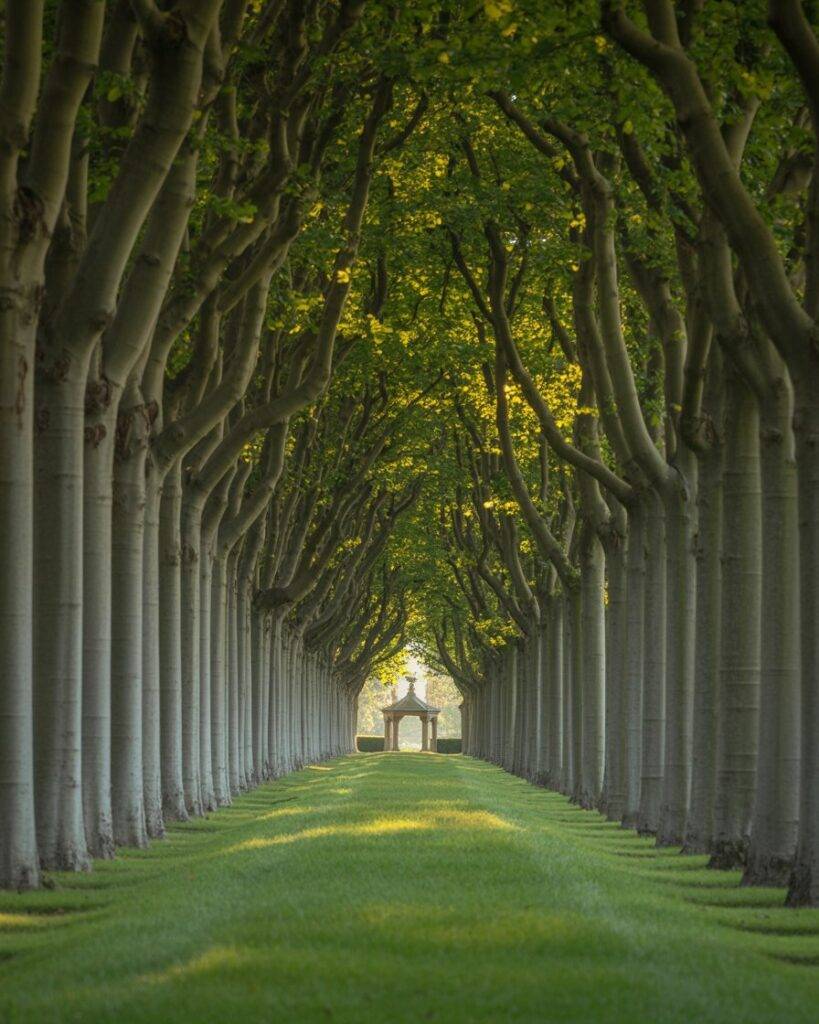
15. Formal Potted Plants
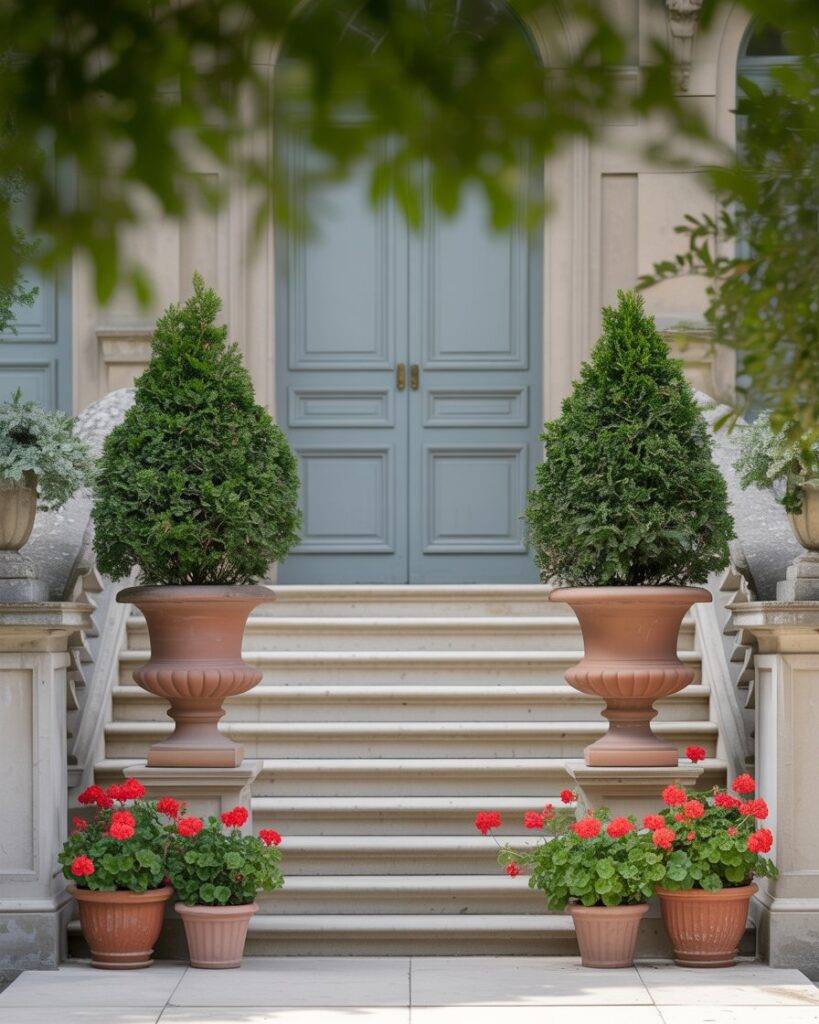
Match potted plants for instant symmetry. Use identical urns (stone or terracotta) with trimmed evergreens like laurel. Place pairs flanking doors, stairs, or benches. Rotate seasonal flowers for color. Pots offer flexibility to refresh layouts easily.
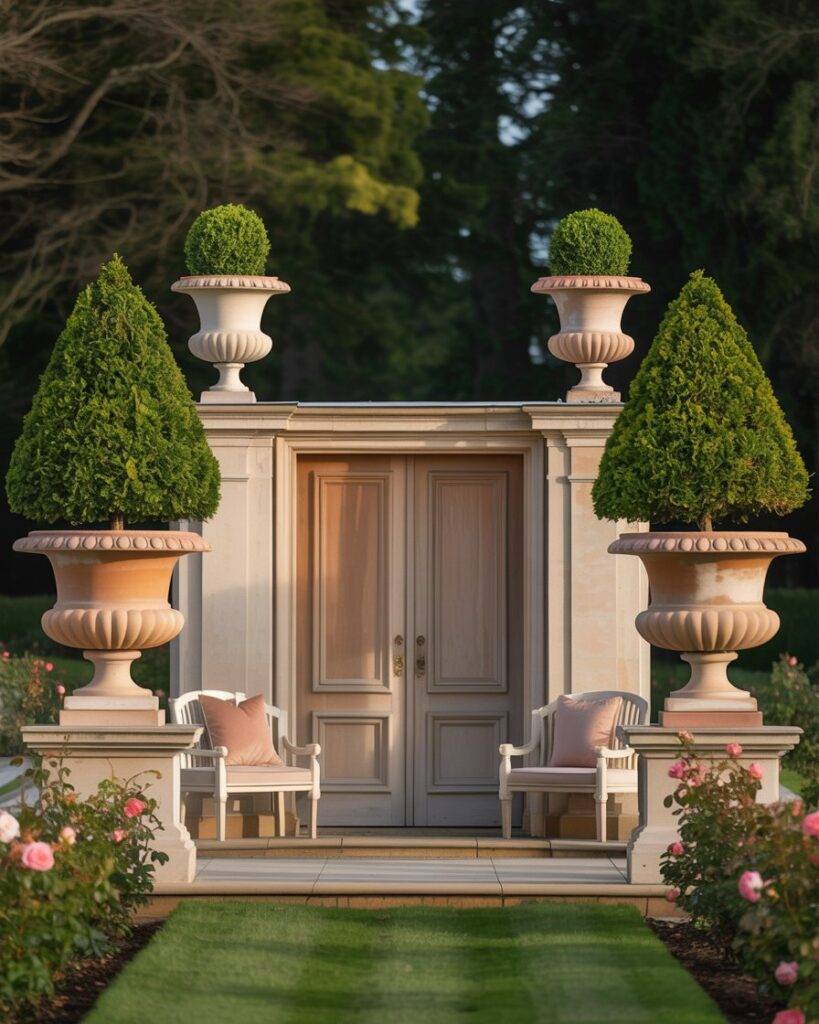
16. Garden Rooms
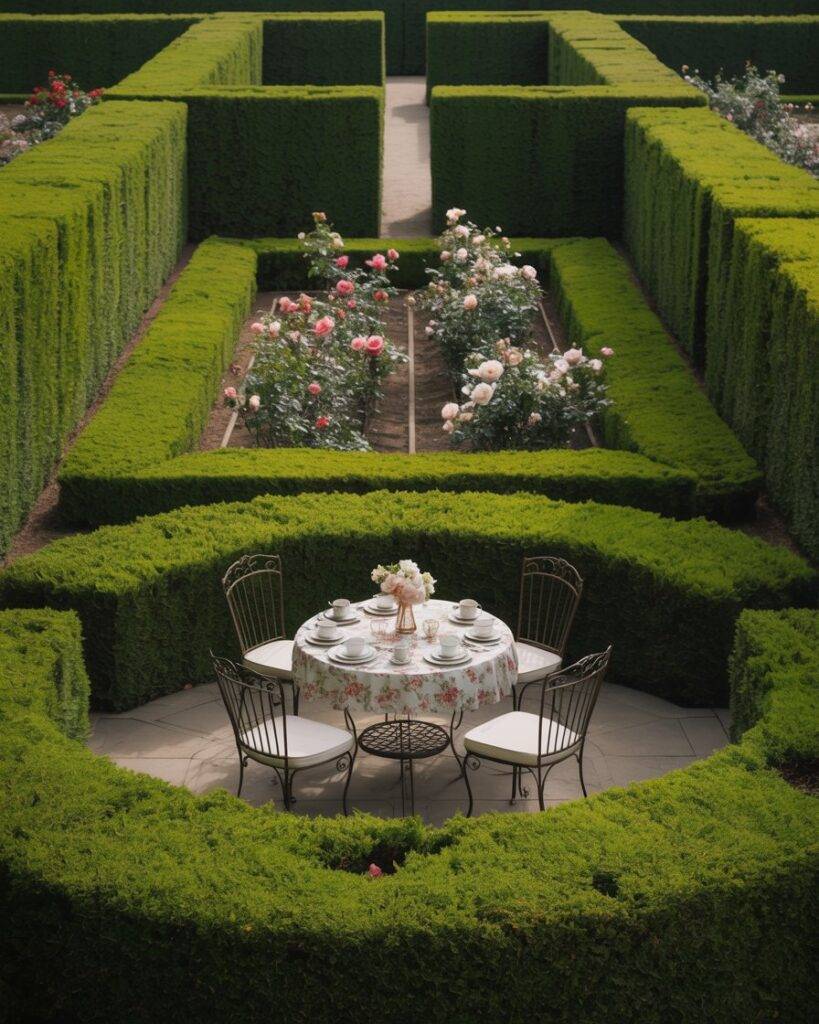
Divide large areas into “rooms” using tall hedges (e.g., beech or yew). Design each with a theme: a dining patio, rose garden, or topiary display. Connect via aligned openings. This organizes space intimately while maintaining overall symmetry.
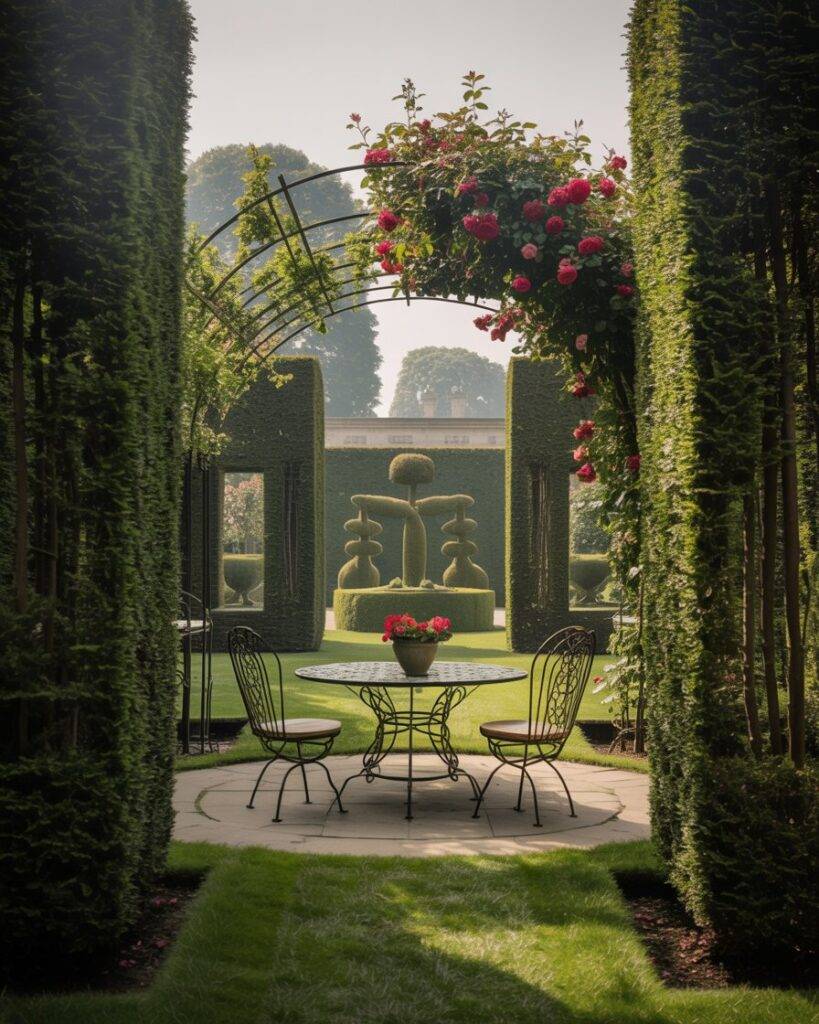
17. Stone Balustrades
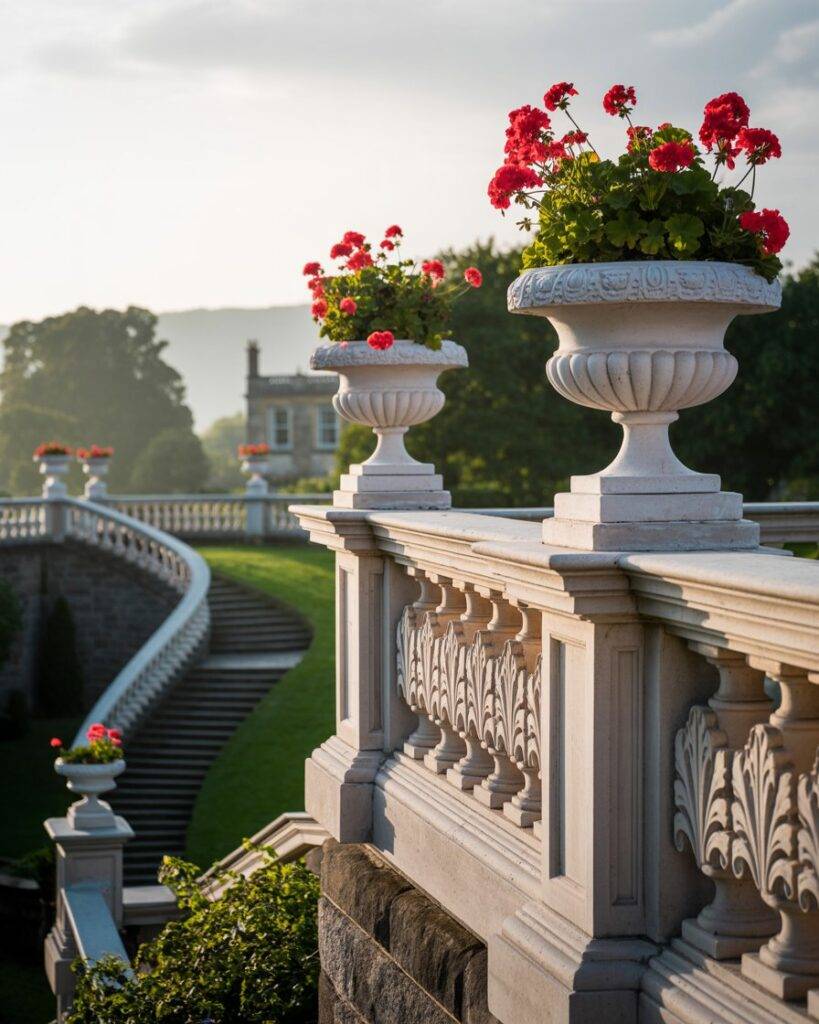
Balustrades (stone railings) edge terraces or stairs elegantly. Install along level changes, topped with urns or lanterns. Choose simple, repeating designs. This adds architectural weight and safety.
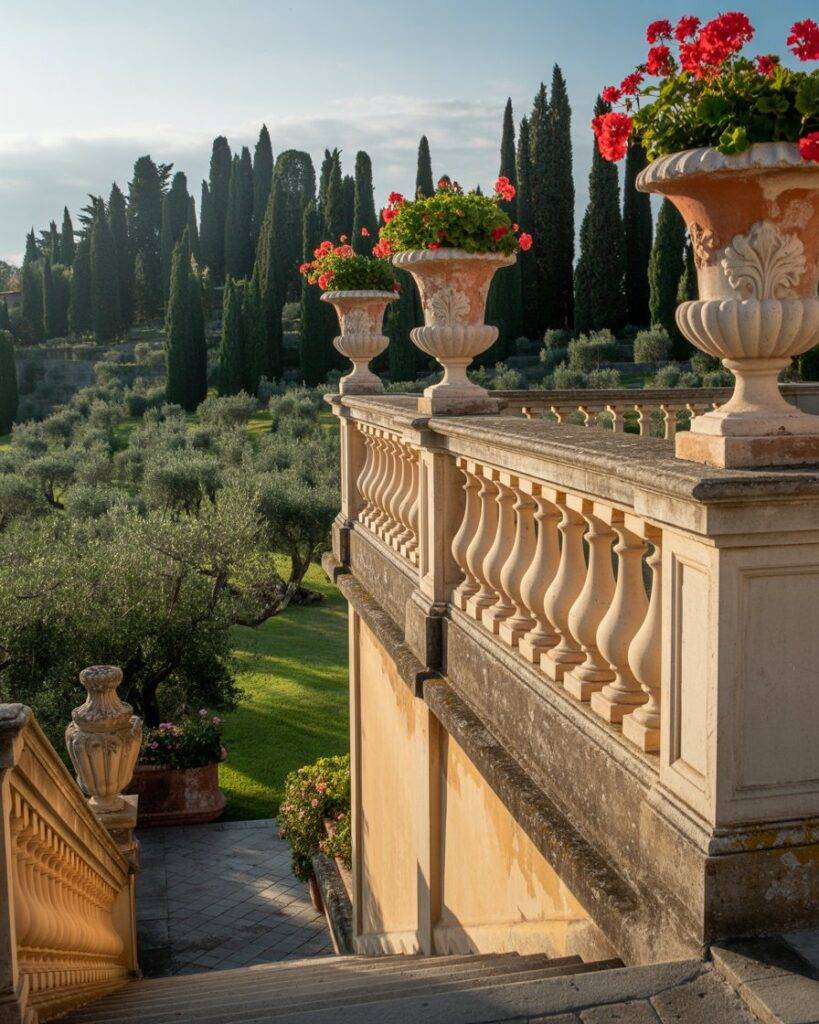
18. Symmetrical Staircases
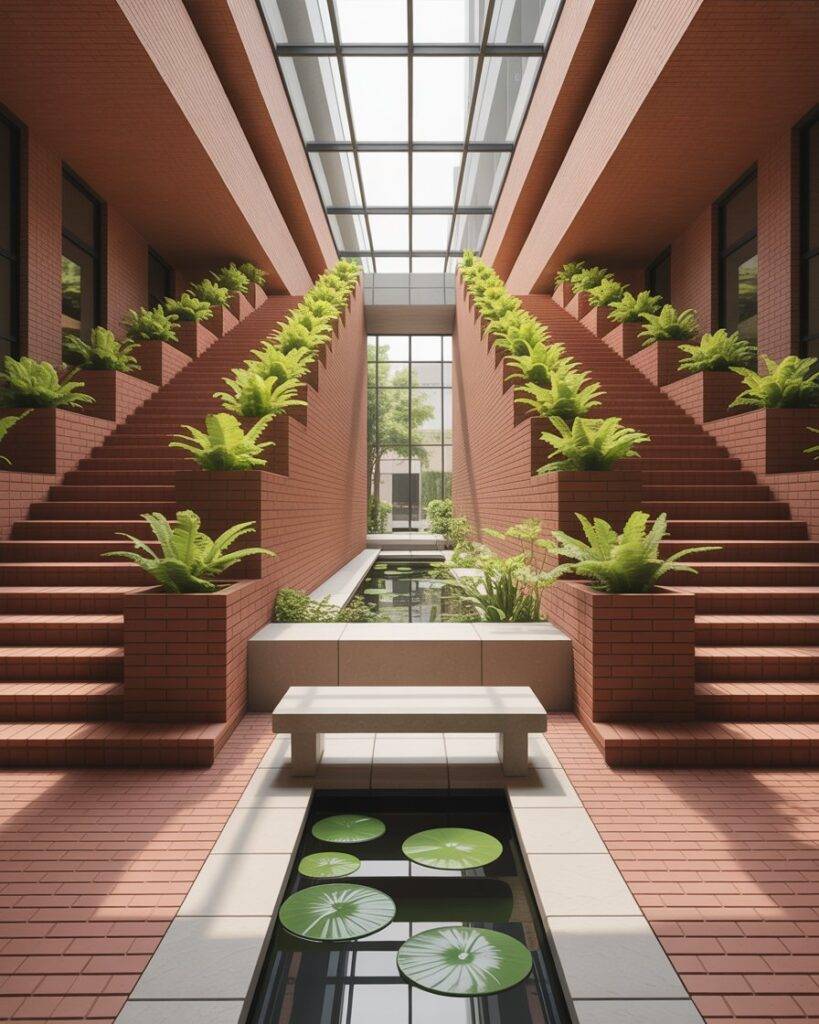
Staircases link levels with grace. Build wide steps with matching materials (e.g., brick) and flank with uniform planters. Include mid-landings for pauses. This turns elevation changes into design features.
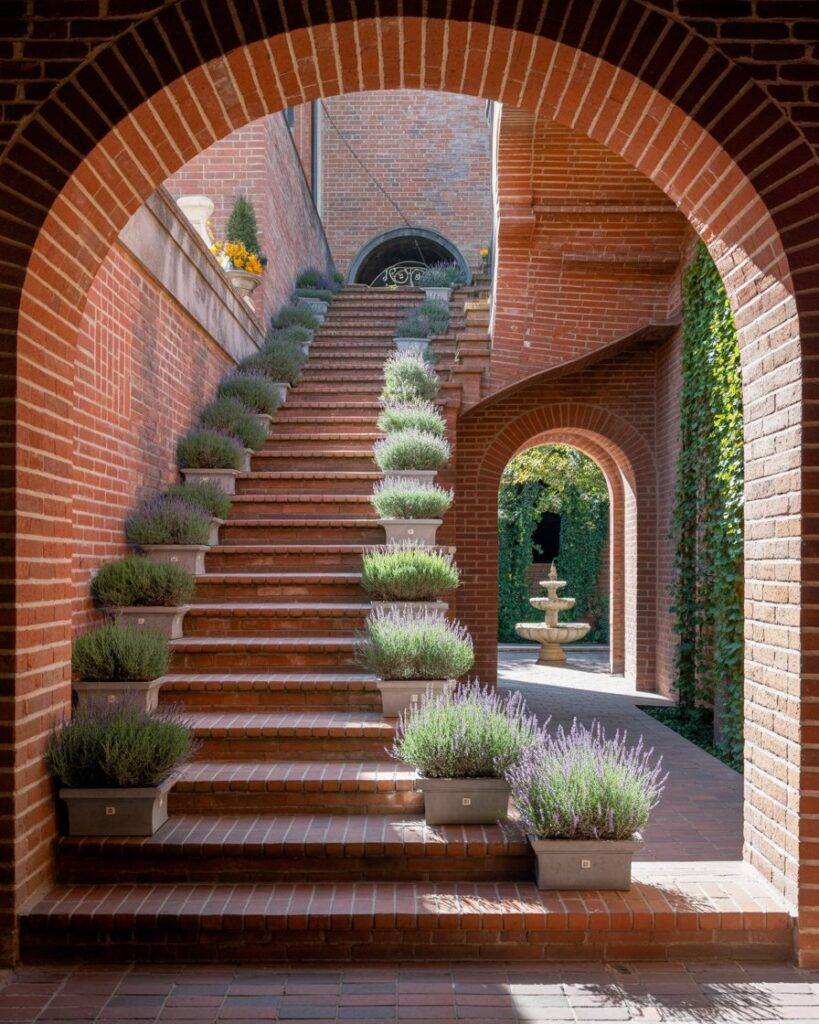
19. Orangeries
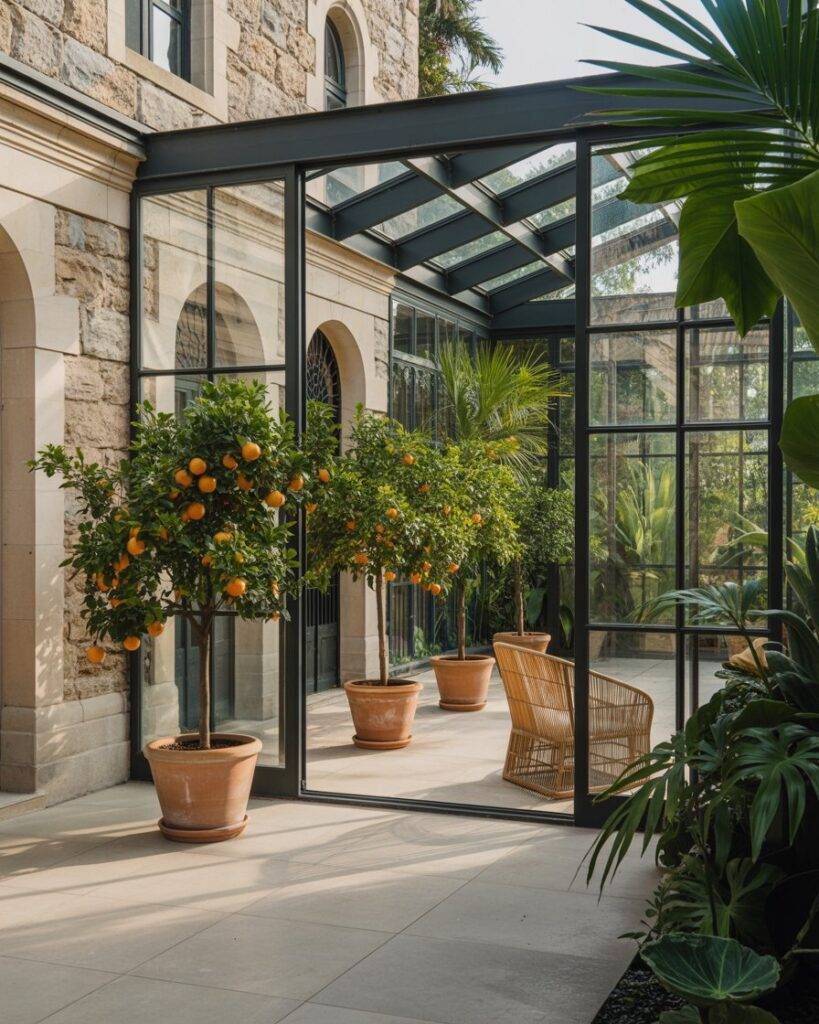
Orangeries (glass-walled garden rooms) house citrus or exotic plants. In position symmetrically near your home, with geometric pot arrangements inside. Use as a sunny lounge or greenhouse.
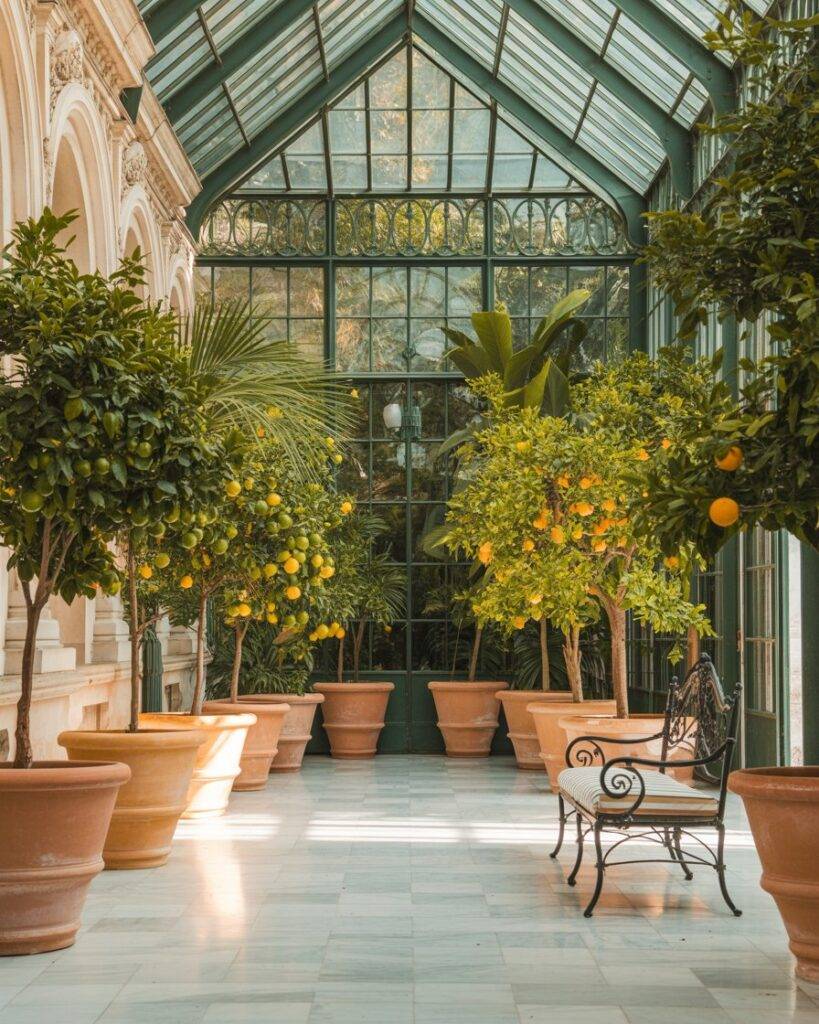
20. Clipped Yew Trees
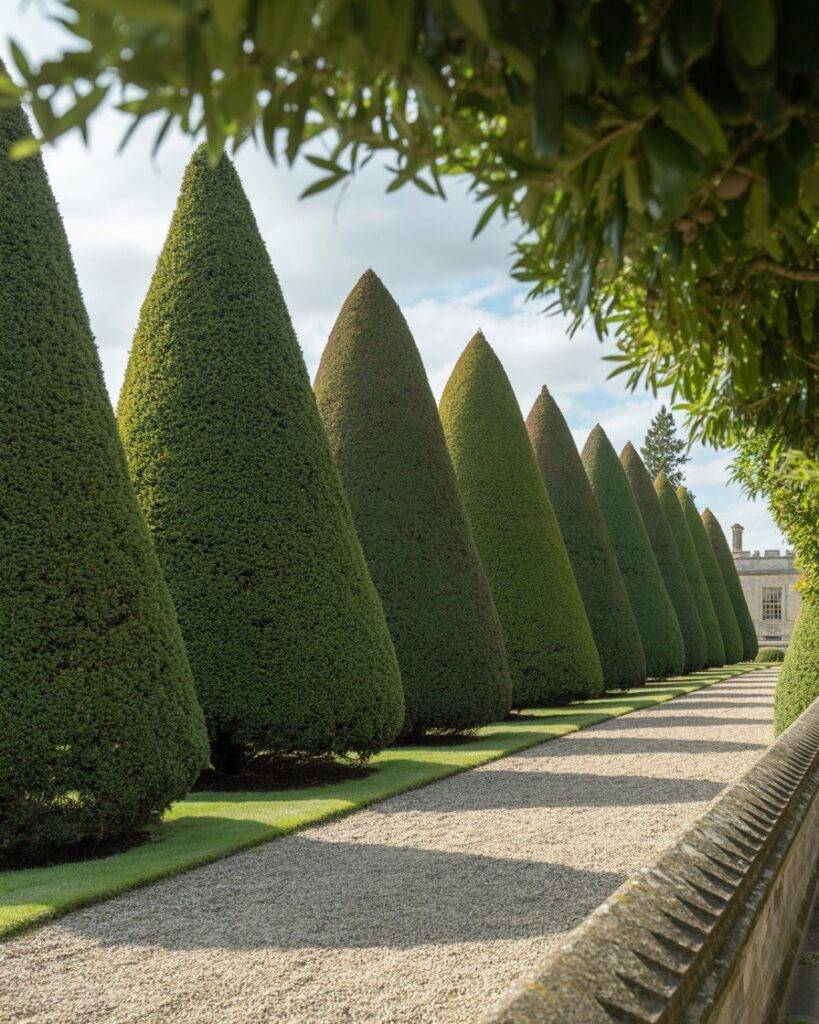
Yews shaped into cones or pyramids add vertical structure. Space evenly along paths or corners. Prune annually. Their dark green foliage contrasts beautifully with lighter elements.
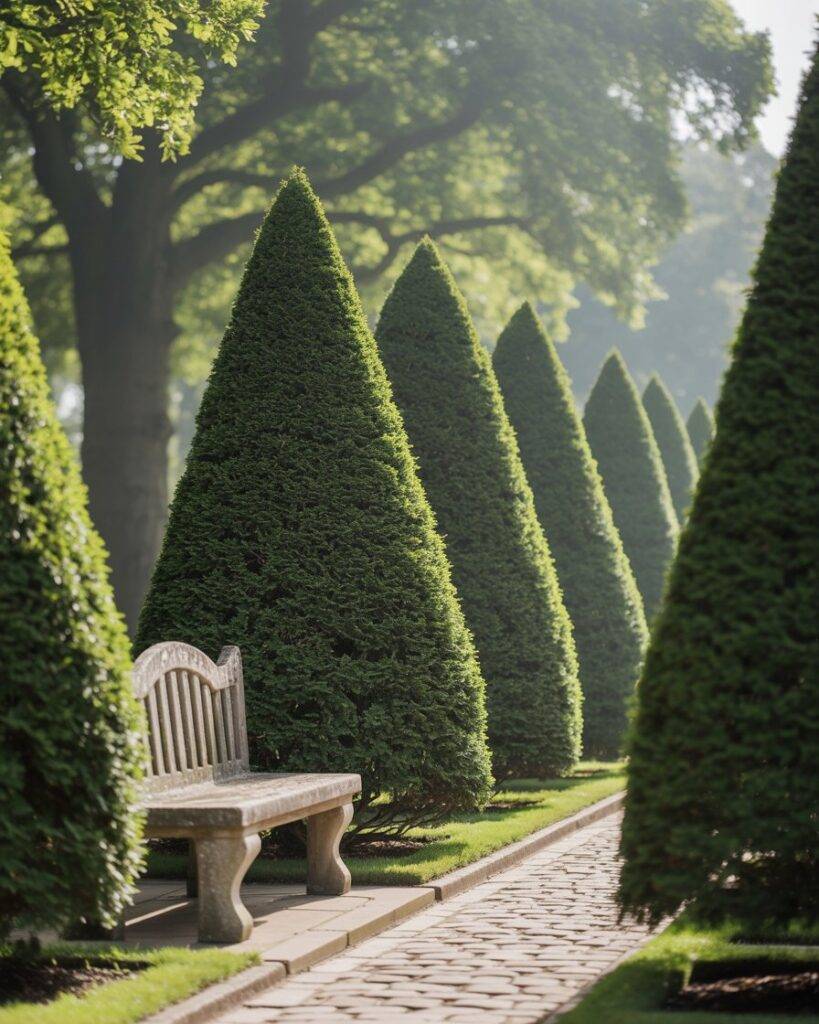
21. Formal Vegetable Gardens (Potager)
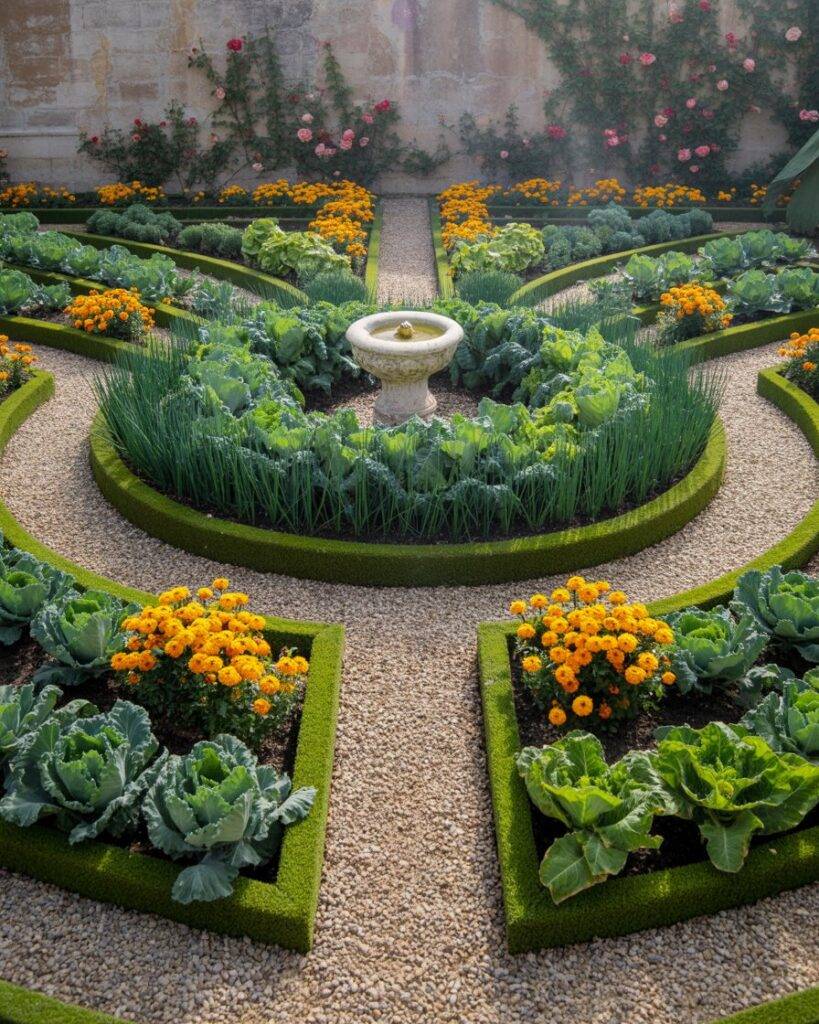
Potagers arrange vegetables artistically. Create geometric beds (e.g., radiating circles) with borders of kale or chives. Mix in marigolds for color. Paths ensure accessibility. This makes growing food visually striking.
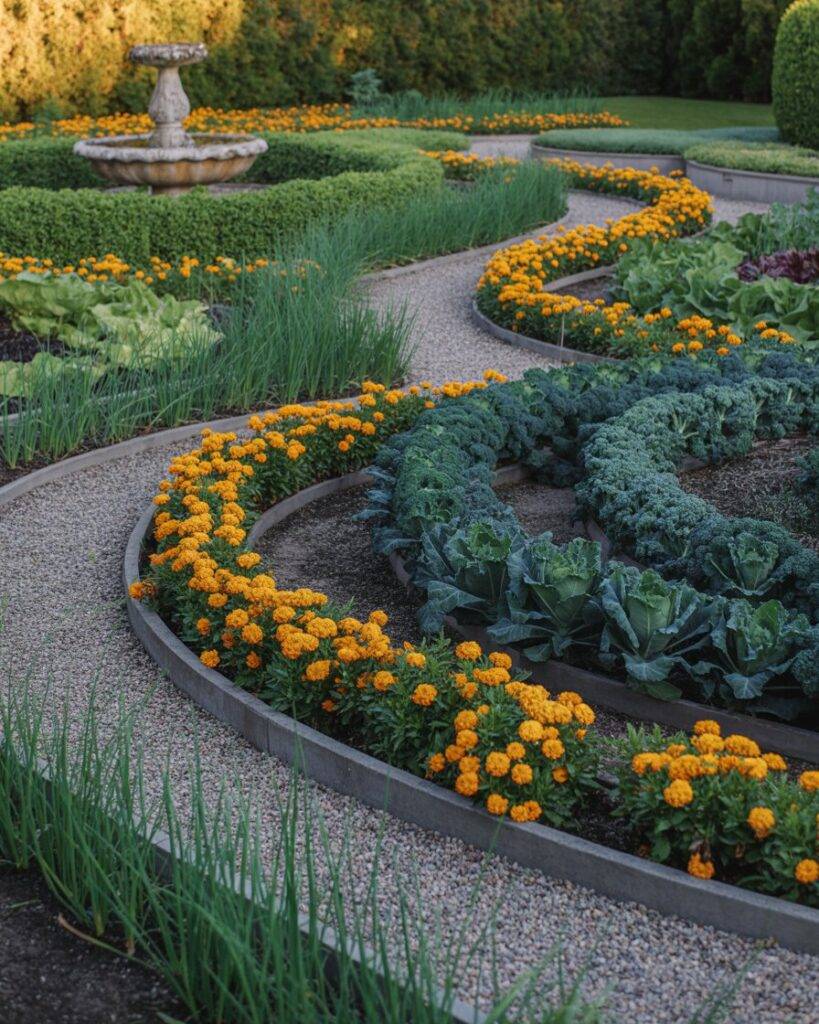
22. Garden Urns
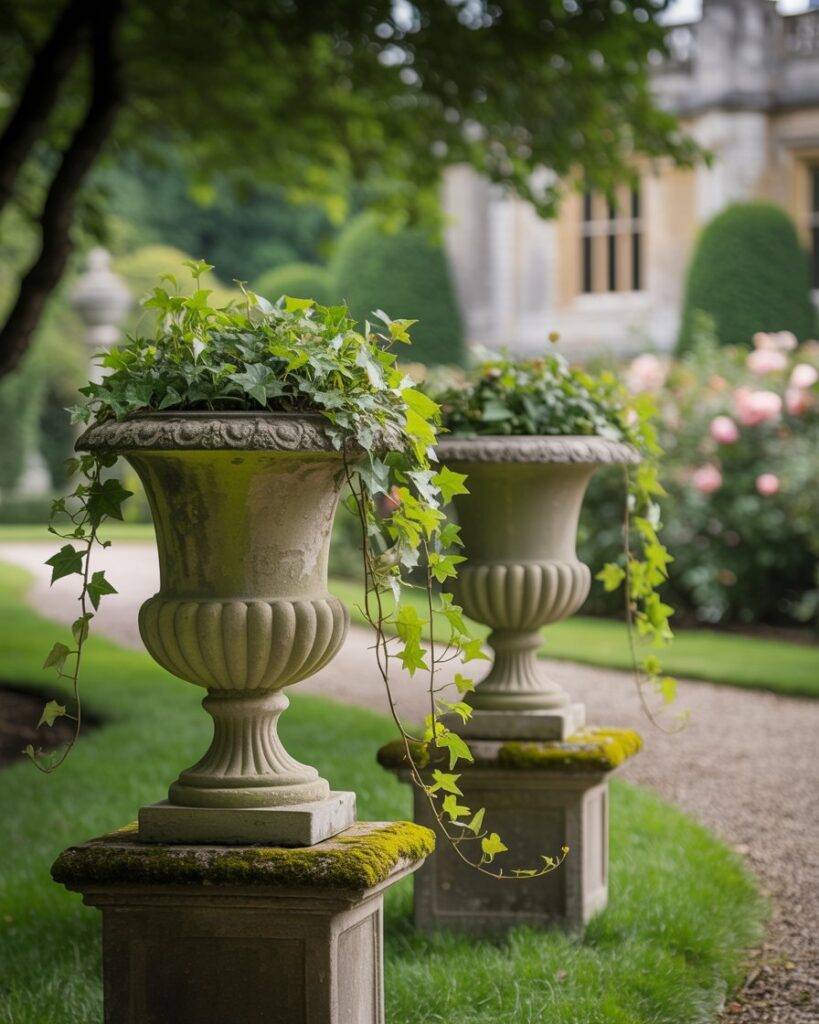
Urns serve as focal points on pedestals or plinths. Fill with simple, cascading plants like ivy. Position at axis endpoints or in pairs. Choose classical designs for timelessness.
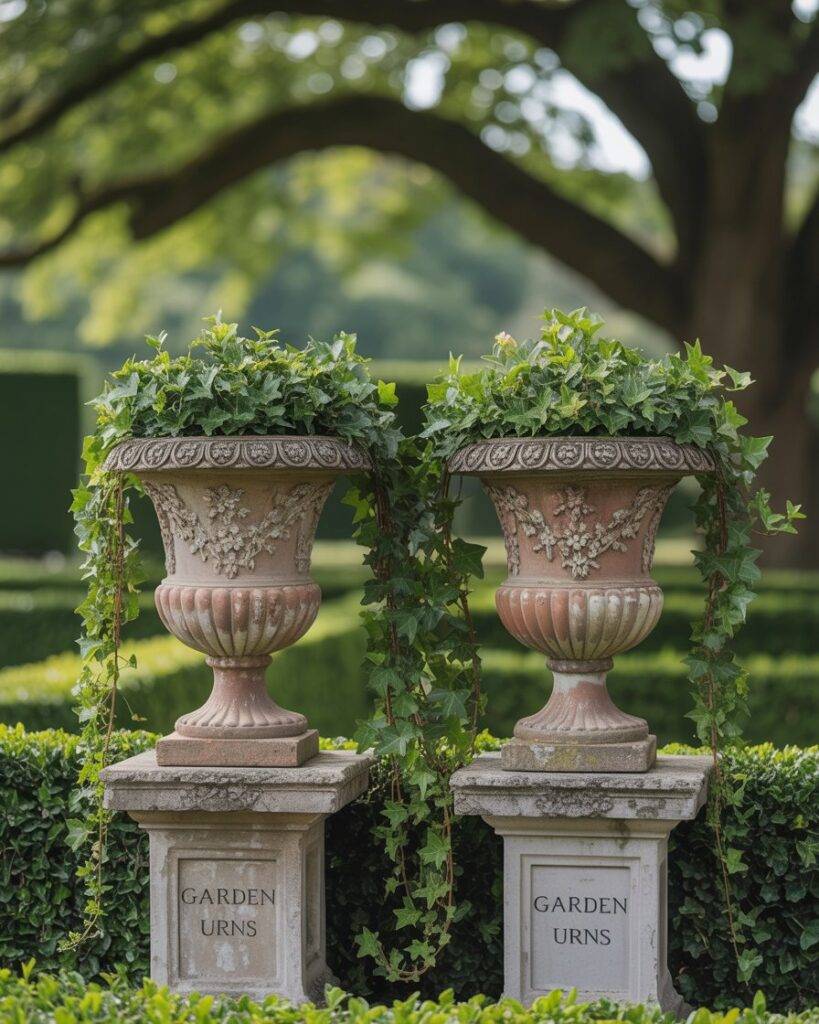
23. Espaliered Fruit Trees
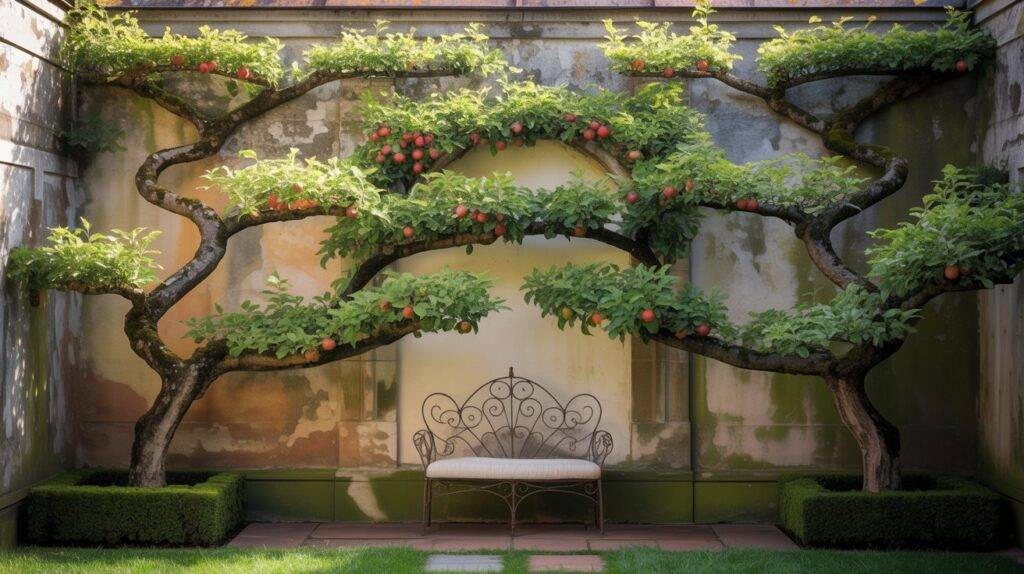
Espaliers train trees (apples, pears) flat against walls in patterns (e.g., candelabras). Prune to maintain symmetry. Ideal for small spaces, they yield fruit while adding structure.
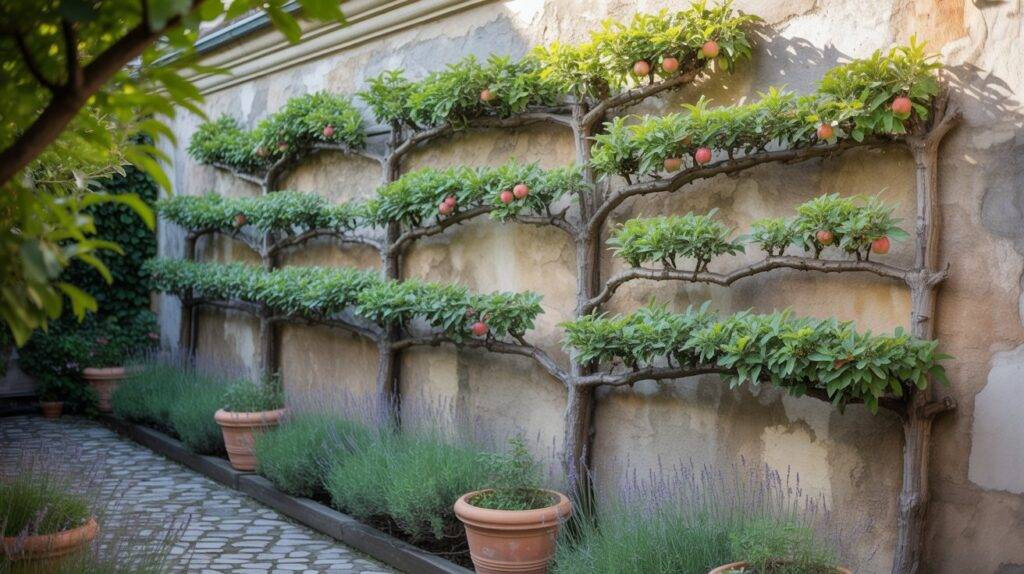
24. Central Axis Design
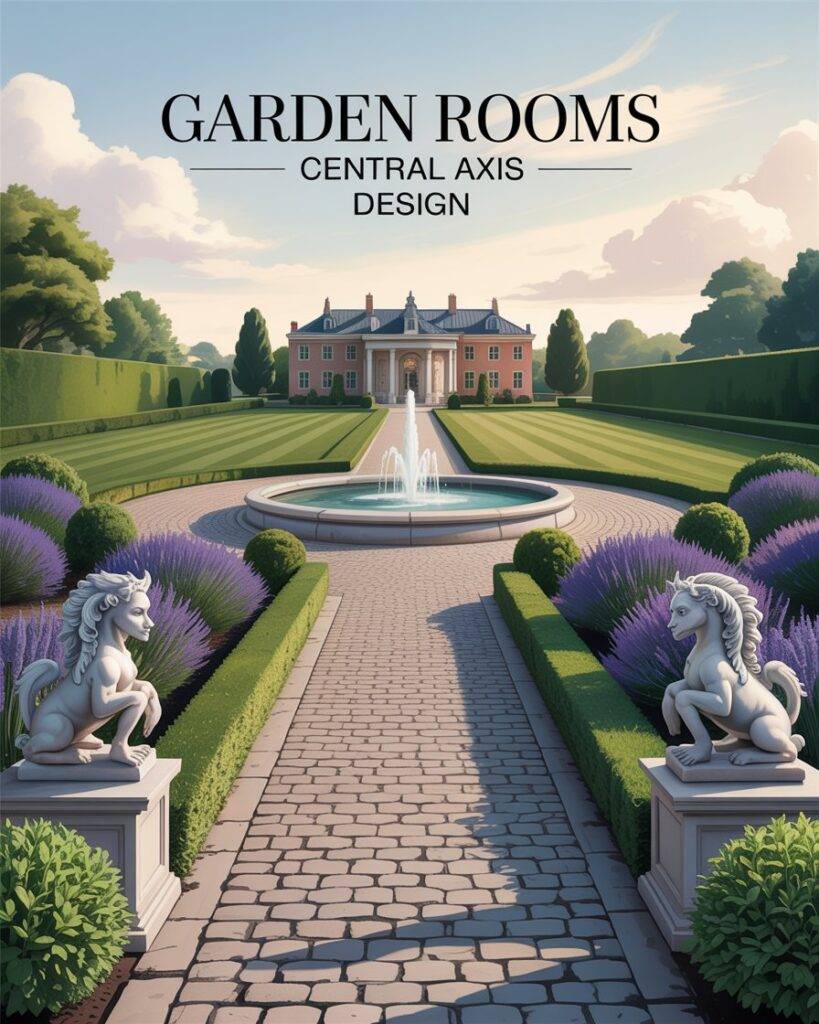
Unify your garden with a central line running from the house outward. Align paths, fountains, and plantings along this axis. Mirror elements on both sides. Even in compact yards, this creates coherence and grandeur.
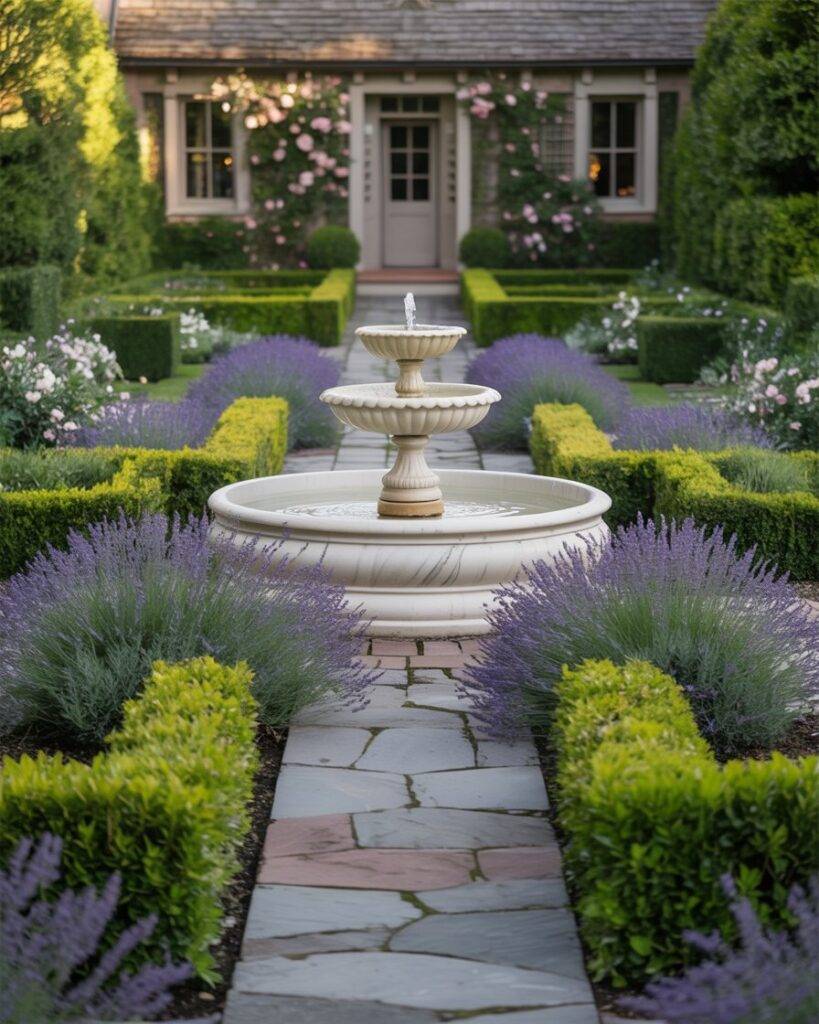
Here are 6 reasons I wrote this article
- Demystify Formal Design: Formal European gardens often seem complex or reserved for grand estates. I wanted to break down the core principles symmetry, structure, topiary showing they’re achievable in any home landscape, large or small. Seeing them as intimidating stops many people enjoying their timeless elegance.
- Offer Practical Inspiration: Beyond just showcasing beauty, I focused on providing concrete, actionable ideas. Each of those 24 elements presents a starting point you can adapt, whether adding a pair of clipped boxwoods, creating a simple geometric lawn, or placing matching pots.
- Highlight Timeless Value: Trends fade, but the balance and harmony of formal European design endure. I emphasized how these principles create gardens feeling intentional, serene, and truly finished, offering lasting satisfaction beyond fleeting fads.
- Showcase Achievable Structure: Many gardens feel chaotic. This style provides a clear framework using hedges, paths, and focal points. I wanted you to see how structure isn’t rigid but actually creates a sense of calm and makes spaces more usable and enjoyable.
- Preserve Gardening Heritage: These designs connect us with centuries of horticultural artistry. Sharing ideas like parterres, allées, and topiary helps keep these beautiful traditions alive and relevant for modern homeowners looking for depth and history in their surroundings.
- Empower Your Creativity: Understanding the “rules” of symmetry and geometry actually frees your creativity within a pleasing framework. I aimed to give you the knowledge and confidence to experiment, blending formal elements with your personal taste for a truly unique space.
Concise Summary
Formal European gardens bring timeless elegance at home through balance, symmetry, and structure. By using elements like geometric lawns, crisp boxwood hedges, sculpted topiary, focal points such as fountains or urns, and strong pathways, this style creates serene, intentional outdoor spaces. The principles work beautifully in yards of any size, offering a framework for enduring beauty and tranquility.
Final Encouragement
Begin with basic components; for example, consider creating boundaries around your front walkway with boxwood, placing two duplicate planters beside your entrance, or creating a geometrical garden bed as a garden site for growing herbs.
Notice how these basic designs change the feeling of your surroundings. Which one of these 24 traditional ideas gets inspired you? Your path to a less stressed and visually enhanced garden begins with one deliberate step. Enjoy creating your unique retreat.
Related Post:
- Niacinamide Whitening Toothpaste: A Natural Solution for Stubborn Stains - November 14, 2025
- Sustainable Christmas Decor Brands Eco Friendly Products to Your Home - November 9, 2025
- Finally, a Massage That Feels Like Real Hands: Handiva Review - November 9, 2025

